.png)
Supplemental oxygen therapy is vital for people with chronic respiratory conditions who experience low blood oxygen levels. When a patient’s blood oxygen level falls below what’s considered normal, this is known as hypoxemia, and it’s a potentially serious condition — especially when it prolongs over long periods of time. The longer you experience hypoxemia, the more likely you are to have heart or brain complications along with many other systemic issues.
Unfortunately, many people who are prescribed supplemental oxygen decide not to use it for one reason or another. Some people believe it’s too expensive to maintain while others are turned off by the idea of carrying an oxygen device around wherever they go. If this sounds like you, it’s important to remember that — while oxygen therapy can often feel like it’s more trouble than it’s worth — your doctor prescribed you oxygen because he/she was looking after your long-term health.
{{cta('fa8abc2a-1e88-4fa3-82fd-1cb5b9ed43b2','justifycenter')}}
The good news is that you don’t have to simply “settle” for one oxygen device or another. There are hundreds of different oxygen machines on the market and our oxygen specialists at LPT Medical are here to help you find the best one for your needs. In this post, we’re going to take a look at the portable oxygen concentrators with the most intuitive design in 2021. In other words, we’ll help you decide the best POC for ease of use so that you don’t feel the need to fall back on your oxygen treatment plan.
If you have any questions or you would like more information about the concentrators below, please reach out to us by phone or email.
What Does it Mean to Have An “Intuitive Design”?
The term “intuitive design” refers to something that’s easy to pick up and learn how it works without sifting through user manuals or consulting the device manufacturer. A great example of this would be a web page. Rather than presenting you with tons of information that you don’t need, web pages tend to be concise and help you navigate quickly to where you’re trying to get on the website. This is also very similar to the way that portable oxygen concentrators are designed.
.jpg)
As opposed to oxygen tanks which are solely designed to be functional, portable oxygen concentrators are designed with both functionality and usability in mind. What this means is that they not only provide you with the oxygen you need, but they make it easy to use. Portable oxygen concentrators manufactured by reputable companies tend to have easy-to-learn user interfaces with only a few buttons to remember. If you struggled to learn how your smartphone works and you believe POCs will be the same, don’t worry because there are plenty of options out there for you. Without further ado, let’s take a look at the most intuitive concentrators of 2021.
5.) The AirSep FreeStyle 5
AirSep is one of the most recognized names in the oxygen industry. They were founded in the 1980s in Buffalo, New York, and they’ve since been known for their heavy-duty industrial oxygen machines as well as their personal medical oxygen generators. AirSep was recently acquired by Chart Industries Inc. which has expanded their global reach and put them alongside other oxygen brands such as Caire Inc., Inogen, and Respironics.
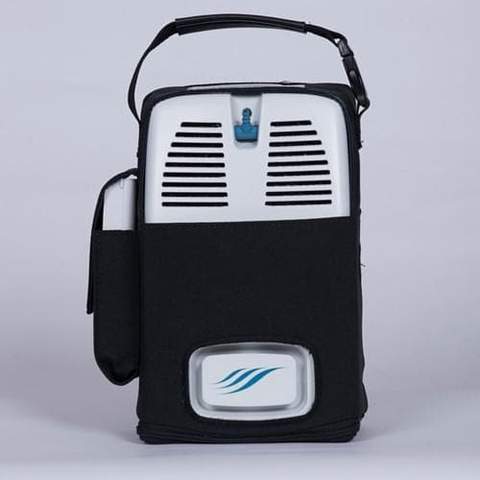
The FreeStyle 5 is one of the first AirSep concentrators under 8 pounds with a flow rating of 5. It’s also one of the few portable oxygen concentrators out there that has gotten a full redesign to make it more user-friendly and reliable. AirSep made several internal changes to the unit, but most people are more interested in hearing about the changes to the exterior. The biggest change they made was to the battery system. As opposed to using the internal battery system, the new design has an external battery. The benefit of this is that you don’t need to open a compartment in order to replace the batteries.
One thing that’s unique about the FreeStyle 5 is that it doesn’t have a control panel screen like most other portable oxygen concentrators. It just has one button for each of the 5 flow settings and a light above it so that you know which one is activated. This makes it the perfect concentrator for people who are intimidated by all the symbols and icons on other concentrators. With the FreeStyle 5, you won’t have very much to worry about.
4.) The AirSep Focus
It almost feels like we’re cheating by putting the AirSep Focus on this list, but it’s worth mentioning nonetheless. The AirSep Focus is the lightest portable oxygen concentrator on the planet and it’s also one of the most intuitive. Since the experts at AirSep wanted to make a concentrator under 2 pounds, they had to pick and choose what features were important to keep in the unit. Due to the limitations, they decided to lock the device at a flow setting of 2, but this also means that there is no screen and no flow adjustment buttons, just a single power button. Press the button once and the device will immediately start putting out oxygen. It’s that simple!
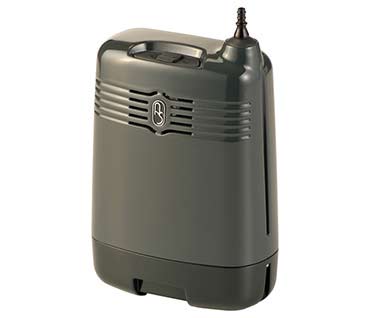
One of the major benefits of having such a lightweight device is that you can carry it any way you want. Put it in a backpack, carry it over your shoulder, or you can even attach it to a belt buckle! This is one of the reasons why the AirSep Focus is such a versatile device. In fact, many people forget they’re even wearing it as they go about their day.
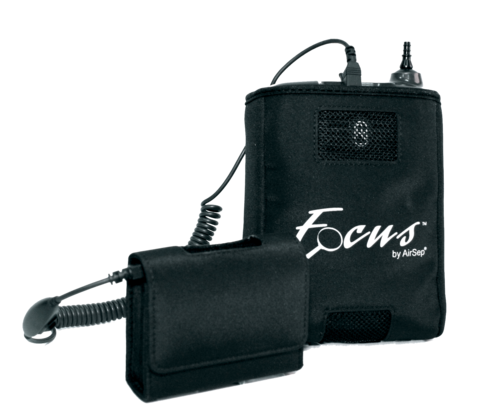
Despite how small and lightweight the AirSep Focus is, its battery life is nothing to joke about either. The micro battery that comes with the device can last up to 1.5 hours on one charge and the 8-cell battery sold separately offers up to 3.5 hours on one charge. In other words, you’ll just need to carry one or two extra batteries with you to make it through a full day whether you’re at work, going to visit a friend, or just going out for a walk.
3.) The Respironics SimplyGo
The Respironics SimplyGo is the only continuous flow portable oxygen concentrator on this list. What this means is that it puts out a constant stream of oxygen rather than only putting out oxygen when the user inhales. We tend to not recommend these types of units for most oxygen patients because they’re much heavier and bulkier than their pulse dose counterparts. However, the Respironics SimplyGo is an exception to that. While this oxygen machine is certainly bigger and heavier than the other concentrators on this list, it’s not heavy enough that you’ll need to wheel it around using a rolling cart.
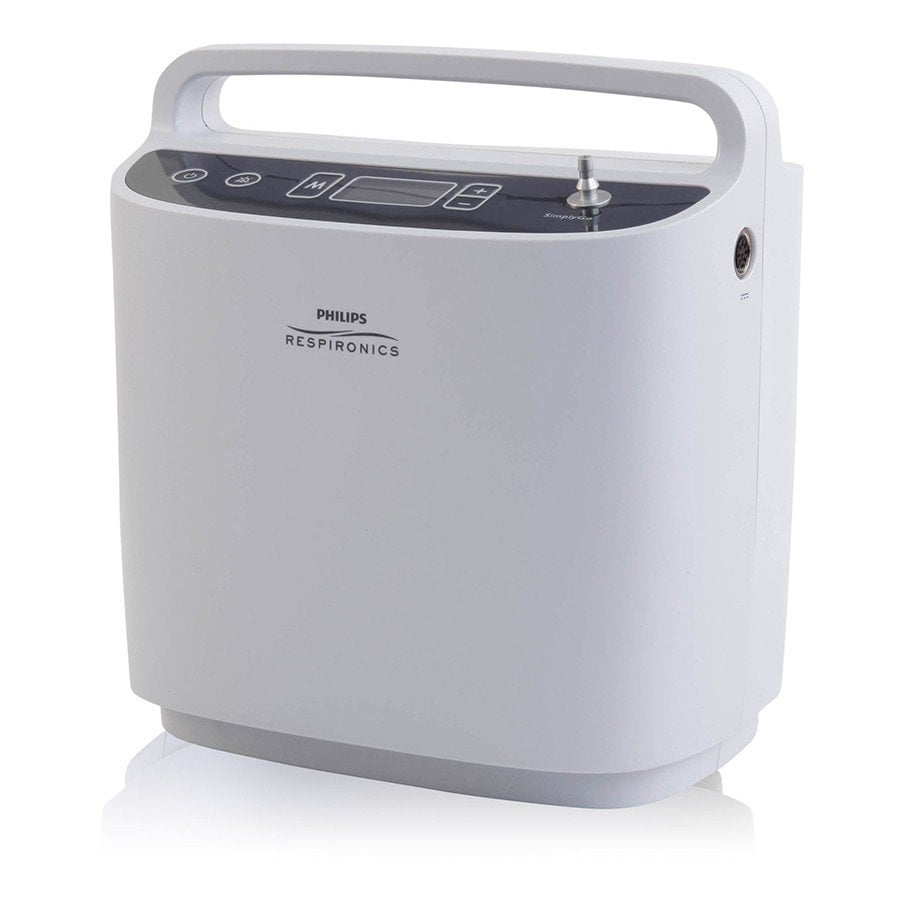
The first thing that you’ll likely notice about the SimplyGo is that it has a big carrying handle on the top of the unit. This is pretty unusual for an oxygen concentrator but it’s hard to deny the benefits that it offers. If you have to set your concentrator on the ground for one reason or another you can simply use the handle to pick it up again rather than straining your back to pick it up from the bottom.
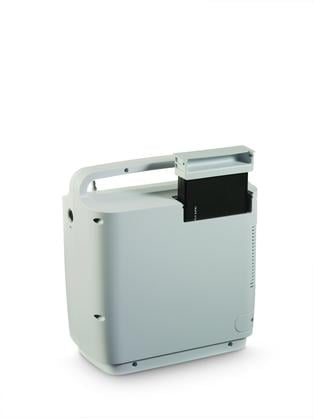
Another intuitive feature of the Respironics SimplyGo is its battery port. Instead of being located on the bottom of the unit like with most concentrators, the Respironics SimplyGo batteries are located on the top. This makes it incredibly easy to switch out your batteries on the fly because you don’t have to flip the device over in order to do it. Simply pull up on the handle and slide in the other battery.
2.) The Inogen One G5
The Inogen One G5 is the latest device in Inogen’s pulse dose line of concentrators. Within the past several decades, Inogen has become well-established as one of the top innovators in mobile oxygen devices. The Inogen One G3 was championed for its outstanding battery life, the Inogen One G4 was one of the lightest portable oxygen concentrators ever produced and the Inogen One G5 has been an all-around great concentrator since it was released in 2019. Despite the age of the G3 and G4, they’re still in use by thousands of people all around the world. This is a testament to the careful design choices that Inogen makes when putting out a new concentrator.
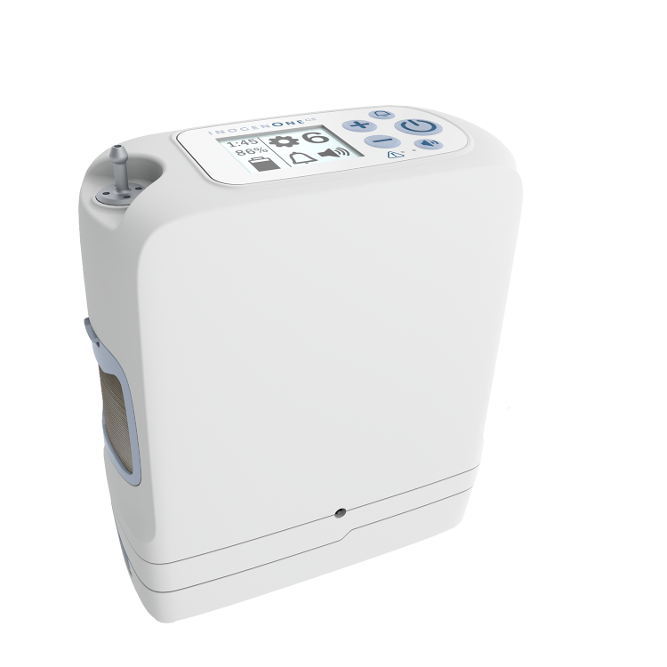
Inogen oxygen concentrators have never been difficult to use, but the G5 is likely their most streamlined unit thus far. The oxygen outlet port is located on the top of the device meaning it’s easy to access and it won’t get in your way as you’re walking. The user interface is also pretty simple with only five buttons: one to turn the power on and off, two for the flow settings, one to change the alarm settings, and one to adjust the volume. The screen displays your battery life, flow setting, and brightness settings.
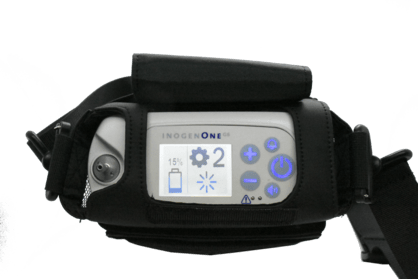
One of the best things about buying an Inogen oxygen machine is that you know there will be plenty of accessories to help you customize your experience — the G5 is no exception to that rule. Since the G5 is such a compact portable oxygen concentrator, this has opened the door for many sleek and comfortable carrying cases. The custom carrying case for example fits snugly over your oxygen device and doesn’t provide any unnecessary bells and whistles. Attached to it is a comfortable adjustable carrying strap and it has a mesh exterior that helps the device take in air properly.
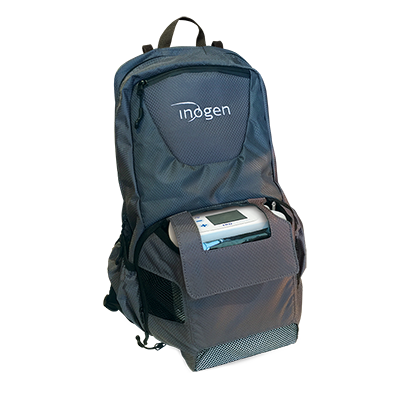
Another carrying accessory for the Inogen One G5 is the G5 backpack. This is like any other backpack but it has an extra pouch in the back to store your G5. Similar to the custom carrying case, the backpack was intuitively designed with a mesh material that helps your concentrator function properly. What’s more, it has an opening on the top where the oxygen nozzle is located so that you use your concentrator as you walk. The G5 backpack has plenty of extra space that you can use to store your personal belongings, so this carrying case is perfect for people who are on the move a lot.
1.) The Caire FreeStyle Comfort
The Caire FreeStyle Comfort is one of the newest portable oxygen concentrators on the market, and to many people, it’s the best. No other oxygen company has been able to match the reliability and convenience of the FreeStyle Comfort, and it’s all because the experts at Caire Inc. took the time and resources to ensure that their device is able to accommodate the lifestyles of oxygen patients around the world.
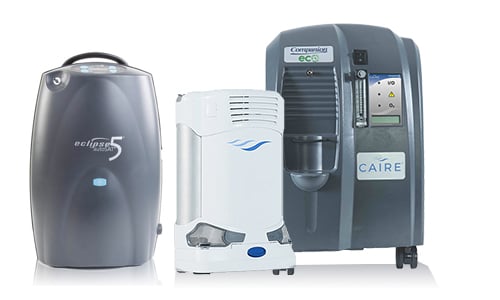
One of the intuitive design features of the Caire FreeStyle Comfort is its ergonomic curve. Unlike most portable oxygen concentrators that move around at a patient’s side due to their box-like shape, the Caire FreeStyle Comfort has a subtle curve built into it that reduces movement at your side as you’re walking. Another benefit of this design is that you’ll always know which way you should be wearing the device. You’ll never have to worry about taking the device off of your shoulder and readjusting it so you can read what’s on the screen.
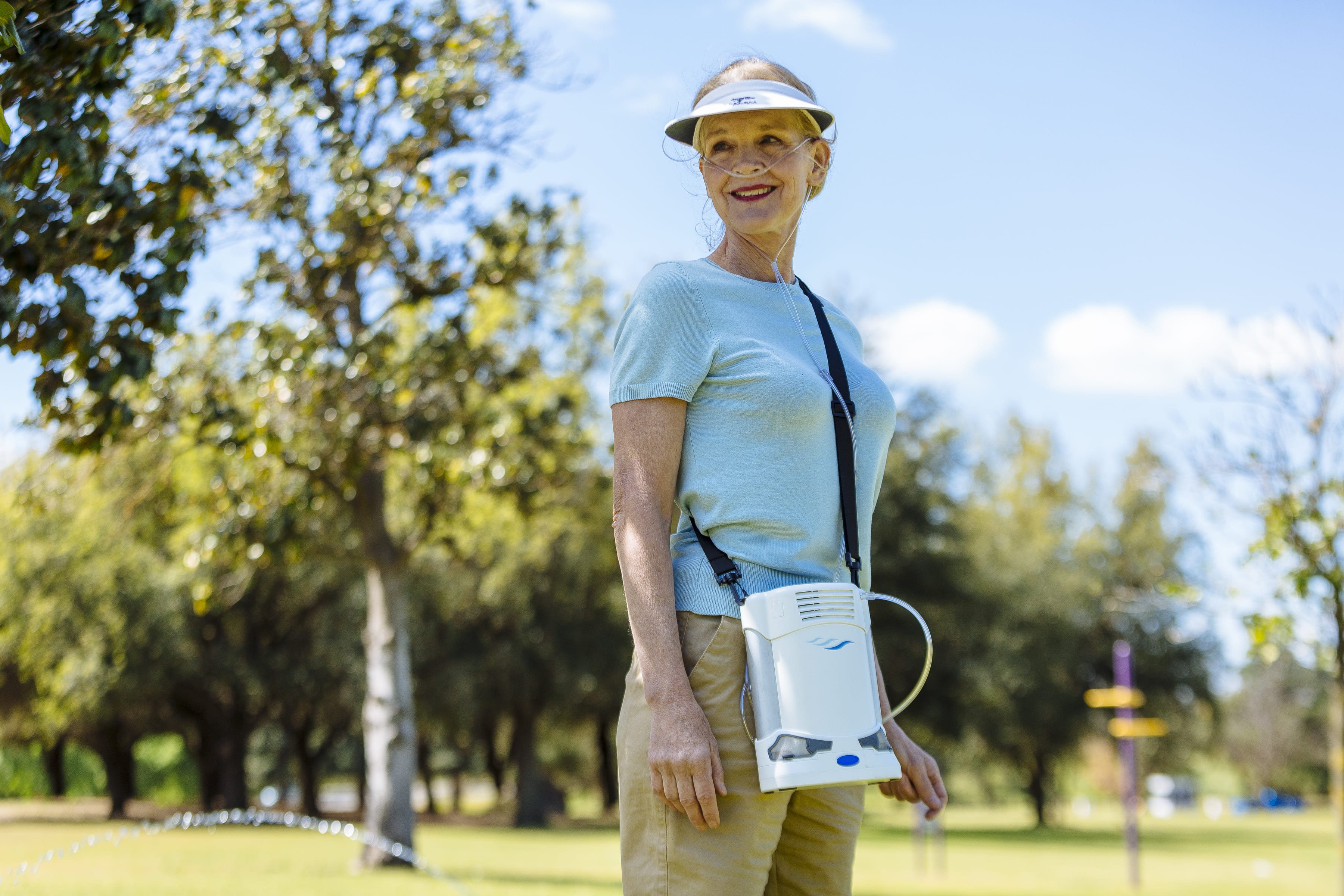
Another intuitive aspect of the FreeStyle Comfort is its user interface. This device keeps it as simple as possible in this regard with only three buttons: one to turn the device on and off and two to adjust the flow settings. The screen is also extremely streamlined and doesn’t provide you with tons of information that you don’t want or need. When you look at the screen you’ll simply see the battery life, battery life percentage, and flow rate — that’s it!
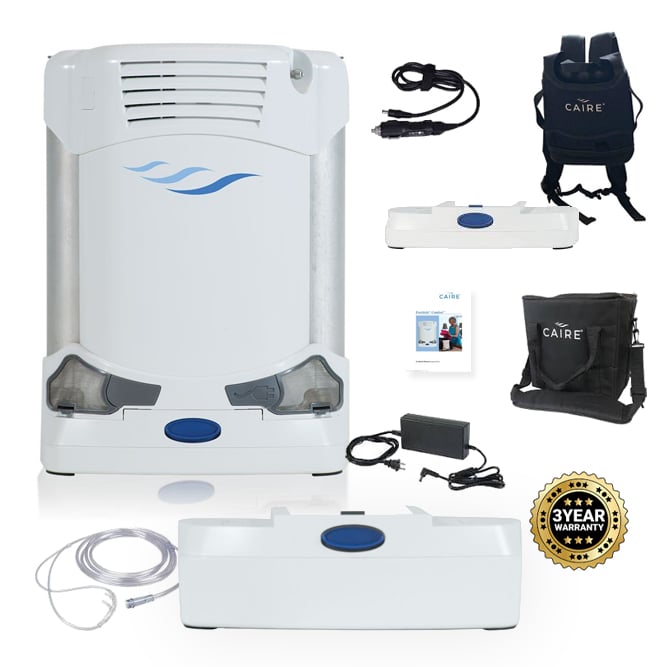
Replacing the batteries on your Caire FreeStyle Comfort is extremely easy and intuitive. On the front of the device, you’ll see a blue tab. Simply press the tab and pull downwards. What’s more, the particle filters are also on the front of the device and can easily be removed for weekly cleaning or whenever they get dirty. Generally speaking, many people prefer the design of the FreeStyle Comfort over other concentrators on the market because it looks sleek and only takes a few minutes to figure out how it works.
Conclusion
The way an electronic device works is incredibly important. Portable oxygen concentrators like the Caire FreeStyle Comfort and the Inogen One G5 are not only powerful and reliable but they’re designed to be easy to learn and easy to operate without the user having to constantly consult the user manual. While they both have some additional features like CAIREView and Inogen Connect, these applications are separate from the basic functions of the concentrator and you don’t need to use them in order for your device to work properly.
In this post, we highlighted just a few of the intuitive design choices made by some of the most trusted oxygen manufacturers in the industry. There’s a clear trend towards making portable oxygen concentrators more seamless in the day-to-day lives of oxygen patients, and it’s likely that many oxygen patients will begin to feel less stigma towards oxygen devices in the future as a result. If you’d like to learn more about the concentrators listed above, click the links to visit their respective pages. Otherwise, feel free to call us or email us to get connected with an oxygen specialist.
.png)
Mental illness is a growing problem in the United States. According to Mental Health America (MHA), 1.5 million more Americans experienced mental health issues in 2017 than the previous year. What’s more, surveys from the Centers for Disease Control and Prevention (CDC) indicate a sharp increase in self-reported behavioral health symptoms since the beginning of the COVID-19 pandemic. While there are many possible factors that are contributing to these issues, one of the lesser discussed factors is social isolation.
Social isolation is defined as either a partial or total disconnect from social networks. According to a report from the National Academies of Sciences, Engineering, and Medicine (NASEM), one-third of adults aged 45 and older feel lonely, and nearly one-fourth of adults aged 65 and older are considered to be socially isolated. Additionally, people with chronic illnesses — especially debilitating illnesses like COPD — can lead to a higher risk of social isolation and loneliness.
{{cta('fa8abc2a-1e88-4fa3-82fd-1cb5b9ed43b2','justifycenter')}}
COPD is often labeled as an “invisible illness” because it’s not always possible for an outside observer to fully understand what COPD patients are experiencing. While some COPD patients may be able to get around just fine and keep up with their friends, that doesn’t mean they aren’t experiencing adverse physical or psychological symptoms. In this post, we’re going to bring some awareness to social isolation and loneliness in COPD, why it happens, and how it can be prevented.
What are the Effects of Social Isolation?
According to a national survey conducted by Cigna, nearly half of the 20,000 participants reported feeling lonely. These numbers are concerning because there are a number of mental and physical health risks associated with loneliness. A study from Brigham Young University found that social isolation has as many health risks as having an alcohol use disorder or smoking 15 cigarettes a day and that it’s as harmful to mental health as obesity.

While the outlook for people experiencing social isolation and loneliness may seem grim, there is actually a growing amount of awareness surrounding the issue. People are beginning to associate the growing loneliness in society with the excessive use of technology and social media which is taking people away from face-to-face interactions. On the other hand, many people believe that social media is giving people experiencing loneliness an outlet to discuss these issues.
Why Do COPD Patients Experience Social Isolation?
Social isolation isn’t always as clear-cut as many people believe. While you may have an idea of a socially isolated person as someone who lives alone and doesn’t go out to visit people, this is only half of the story. There are many COPD patients who have close family members and belong to close-knit communities, but still, feel socially isolated. In order to understand this, let’s take a look at some of the reasons why COPD patients experience social isolation.
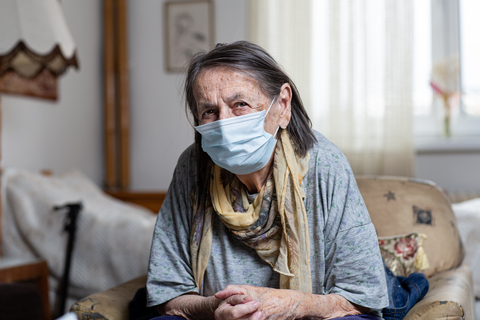
Chronic Pain and Fatigue
Chronic obstructive pulmonary disease affects an estimated 16 million people in the United States alone. However, no two cases of this disease are the same. While some COPD patients may be able to get out and do anything they want, others are held back by symptoms like chronic pain, fatigue, and persistent breathlessness. When this is the case, people often struggle to find the motivation to work through these challenges in order to get out and spend time with friends and family members.
![]()
COPD is a disease that develops slowly over the course of many years. So, it’s unlikely that will find yourself suddenly deciding to stay in rather than going out to meet people. Although, in many ways, this can be even worse than the alternative because you might not realize that you’re changing your lifestyle. Some studies estimate that about 70% of COPD cases are undiagnosed meaning millions of people could be experiencing social isolation due to a condition that they’re not even aware of. Oftentimes, the symptoms are shrugged off as a normal sign of aging.
Risk of Exacerbation or Infection
If we’ve learned anything from the past year it’s that viruses can spread quickly and they don’t affect all demographics in the same way. The novel coronavirus (COVID-19) hit the COPD community in a way that nobody could’ve predicted, and even now, over a year later, people are still feeling the effects of it. The Centers for Disease Control and Prevention (CDC) lists COPD as “high risk” for experiencing severe symptoms from COVID-19 and this rings true for many other viruses as well like the flu and viral pneumonia.
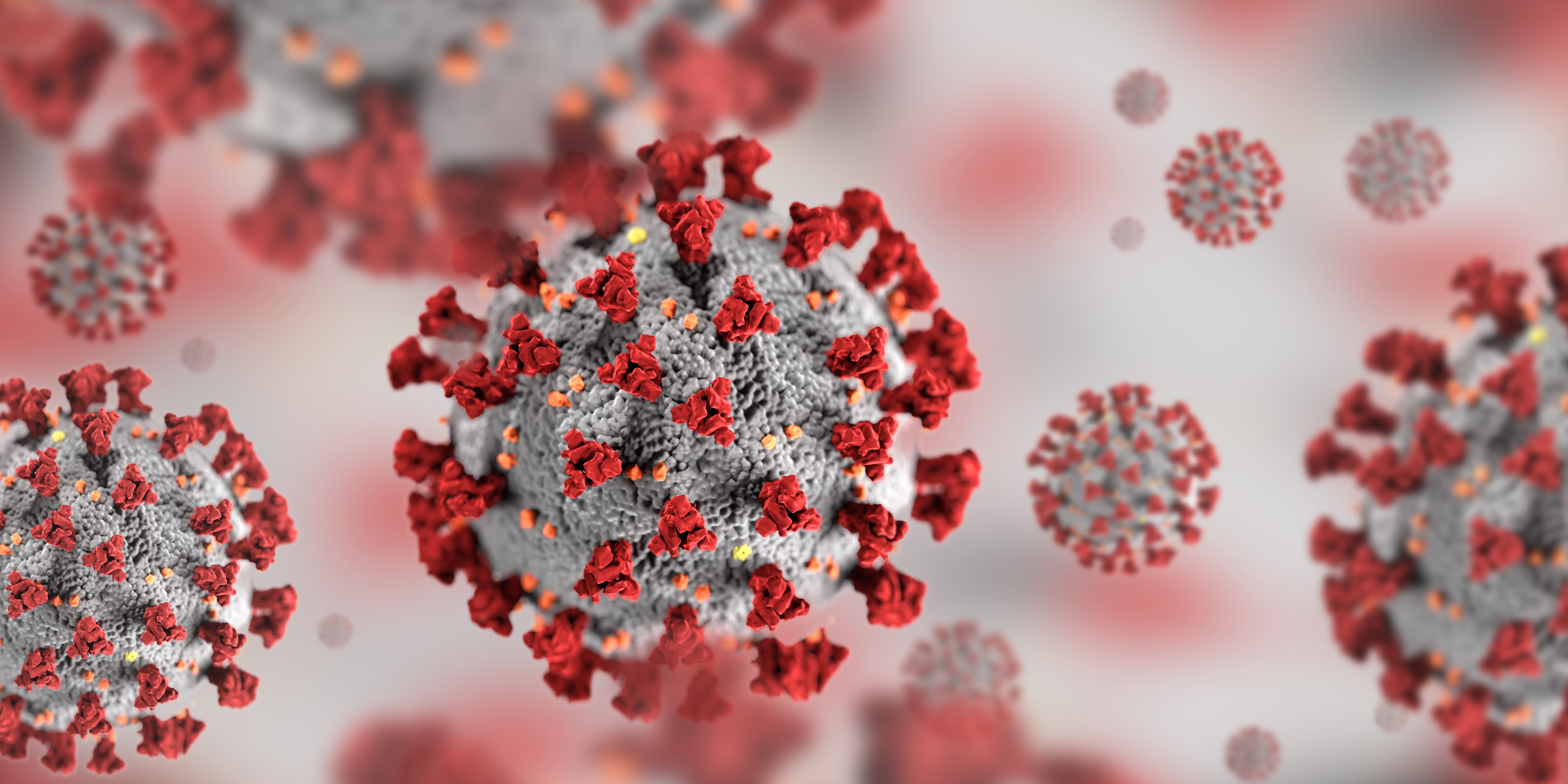
Another reason the COPD community has been hit so hard by the virus is due to the average age of people with this disease. It’s estimated that most people are at least 40 years old by the time they start experiencing COPD symptoms. But since COPD develops slowly, many people don’t start experiencing severe symptoms until they’re in their 60s. The CDC also states that people over the age of 65 are at high risk for severe COVID-19 symptoms, so this is a major factor at play too.

On top of the ongoing pandemic, COPD patients also have to worry about air quality. Highly polluted areas or places with a lot of allergens like pollen can result in respiratory exacerbation and even hospitalization. Because of this, it’s recommended that COPD patients plan their day so that they aren’t outside when air pollution is at its worst. Airnow.gov is a great tool if you want to quickly learn about the air quality in your area. Simply input your city or zip code and you will be provided with a number between 0 and 500 with 0 being no pollution and 500 being severely polluted. It’s recommended that COPD patients do not go outside if the air quality index (AQI) is above 100.
A Changing Lifestyle
Being diagnosed with COPD can be a life-changing moment. One day you’re following your normal routine, and the next your doctor is asking you to make a number of lifestyle changes to improve your health. A typical COPD treatment regime involves an improved diet, a pulmonary rehabilitation plan, and supplemental oxygen therapy which helps to keep oxygen levels stable. This can be somewhat overwhelming at first and will take some time to get accustomed to but it’s well worth the effort in the end.
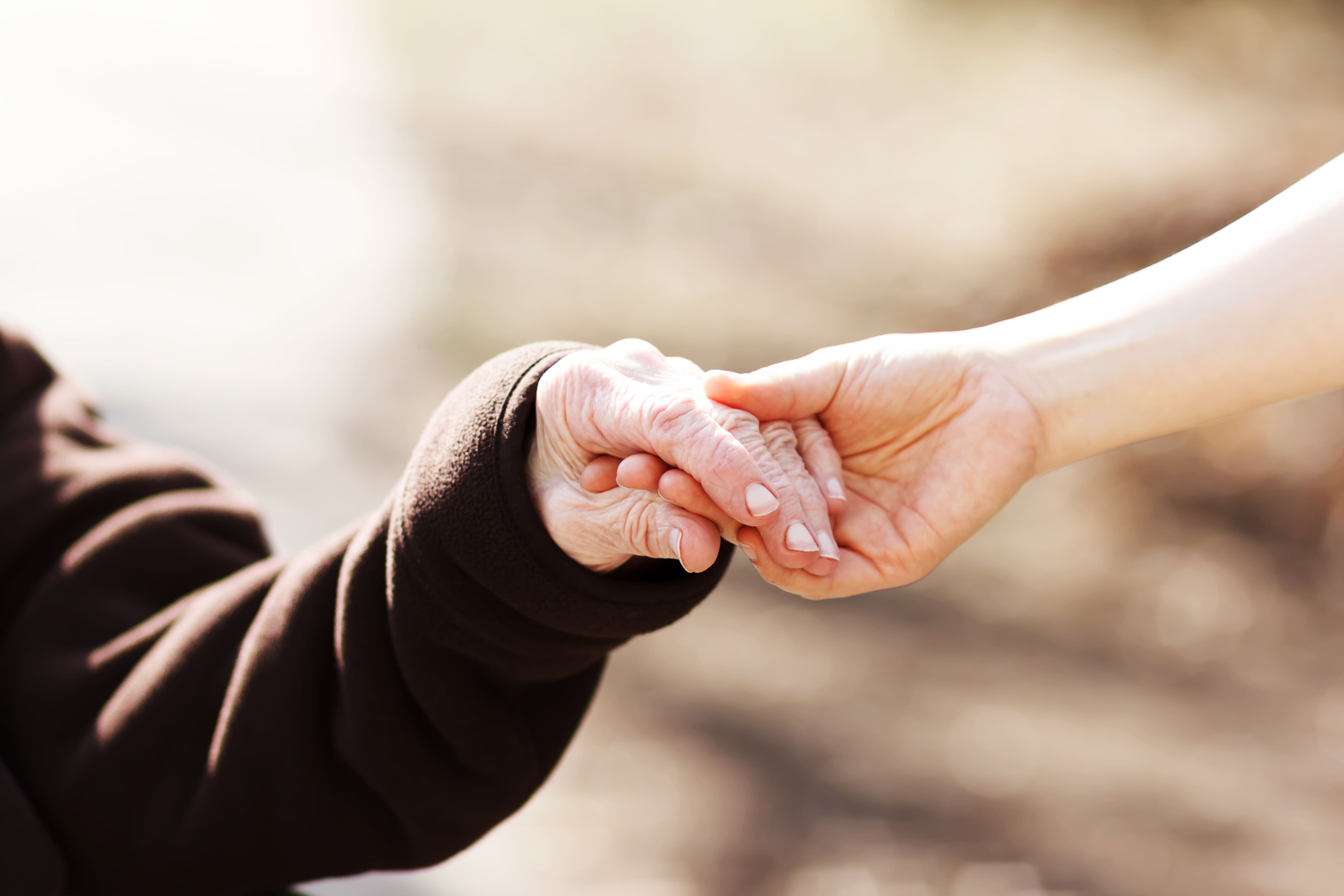
One major lifestyle change that many people are unprepared for is moving into an assisted living facility or receiving in-home care. As COPD patients age, it becomes increasingly more difficult for them to maintain their independence, and oftentimes, friends and family members don’t have the means to be a full-time caretaker. While assisted living can be a convenient option for most people, it leaves open the possibility of social isolation and loneliness.
Social Stigmatization
The term “stigma” is the disapproval of someone based on their perceived characteristics. And although it’s a harsh reality to face, some people view people with chronic conditions as “less capable” even when these claims are completely baseless. The stigma surrounding COPD usually has to do with physical symptoms like coughing or wheezing or medical equipment like oxygen tanks or inhalers. But the bottom line is that it can make people with COPD feel like they don’t belong or aren’t able to keep up with the people around them.
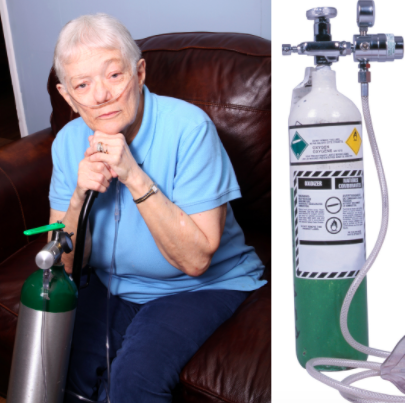
What Can be Done to Prevent Social Isolation in COPD Patients?
Be Open About Your Experiences
The first step to solving problems like isolation and loneliness is to be more open about your experiences with your friends and family members. It’s not always easy putting into words exactly how COPD makes you feel and how it affects your mental health because you may not even be fully aware of how it has. However, by at least trying, you’ll make the people around you more aware of what you’re going through. What’s more, there’s a chance that your friends and family are thinking about the same thing but aren’t quite sure how to ask you about it.
Speak With Your Doctor
Another person you should be open with about your experiences is your doctor or pulmonologist. The reason it’s so important to tell your doctor is that he/she may be able to make adjustments to your treatment plan in order to help you get back on your feet and spend more time with loved ones. At the end of the day, there is no such thing as a “silly question” when it comes to your health. Chances are, many other COPD patients are dealing with a similar situation to yours, so opening up about your social isolation and loneliness will have a positive effect on the COPD community as a whole.
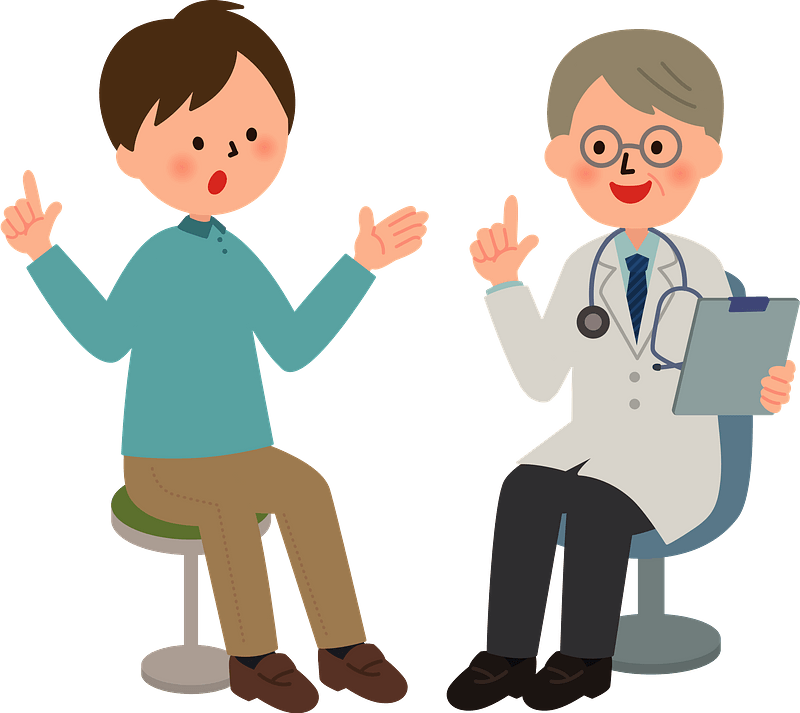
Your doctor might also be able to connect you with a mental health professional who can work with you step-by-step on how to prevent loneliness. Cognitive behavioral therapy (CBT) is a popular form of psycho-social intervention that aims to pinpoint and correct negative or inaccurate thinking patterns that can lead to loneliness. Of course, if the only thing holding you back is your physical symptoms, CBT won’t do much for you. However, if you feel like it’s mainly your mindset holding you back, CBT can work wonders. Many people around the world with chronic illnesses make use of CBT, so you’re not alone.
Embrace Online Communities
Like we mentioned earlier, there are many downsides to online communities. However, it’s impossible to deny the benefits as well. Older generations of Americans are becoming increasingly proficient with computers and social media which can be a great benefit for someone with COPD. Online communities such as COPD360Social hosted by the COPD Foundation or COPD.net’s help center are great for anyone who wants to share advice with other like-minded COPD patients. You might also consider Facebook groups which are free to join and participate in.
.jpg)
Make Use of Technology
In this day and age, we’re completely surrounded by technology wherever we go. While this can definitely be overwhelming at times, it can also be extremely beneficial if we take the time to learn how to use it. As a COPD patient, there are many technologies out there that can make your life much easier, it’s usually just a matter of finding what’s right for your lifestyle and budget. Mobility aids are a great example of a technology that can help you get back out and become a member of the community again. Walking canes, manual wheelchairs, electric scooters, and stairlifts all help you get around with more ease and also help prevent you from overexerting yourself and experiencing an exacerbation. Read this post to learn more about mobility aids for COPD.
.jpg)
Another technology you should consider investing in if you’re a COPD patient is a portable oxygen concentrator. These concentrators work similarly to your supplemental oxygen tank, however, they’re much lighter, smaller, and easier to use. Portable oxygen concentrators are electronic devices so you’ll never need to call an oxygen company to come refill them. You simply need a full battery and you’ll have access to oxygen wherever you go. Another benefit of POCs is that they don’t have the same social stigma attached to them as do oxygen tanks so you’ll feel more confident and secure with your new POC.
Conclusion
COPD is a chronic respiratory disease characterized by breathlessness, chronic pain, and fatigue. It’s the leading cause of morbidity and mortality in the world. Despite this, many people with COPD are suffering from “invisible” symptoms like anxiety, depression, and loneliness. In this article, we took a close look at how social isolation can affect both COPD patient’s mental and physical well-being, as well as offering some insight into how to remedy this. Fortunately, there are many steps that someone can take to prevent loneliness with COPD.
{{cta('43b79c5e-6bd6-4f02-ac27-2d038d20c146','justifycenter')}}
If you’re looking for more great information that will help you manage the symptoms of your COPD, stay tuned to our blog here at LPT Medical. We try to cover a lot of topics that are under-discussed in the COPD community like the mental health aspects of the disease. If you have any questions or thoughts, feel free to leave them in the comment section below. And in the meantime, if you’re looking for an oxygen device that meets all your needs, take a look at our portable oxygen concentrators. We offer some of the top-rated concentrators on the market including but not limited to the Caire FreeStyle Comfort, Inogen One G5, and Respironics SimplyGo.
If you’d like to speak with an oxygen concentrator specialist please call us or send us an email.
.png)
Supplemental oxygen therapy is a foundational part of most COPD treatment plans. The ultimate goal of oxygen therapy is to provide the lungs with a higher concentration of oxygen which helps ensure that your blood oxygen levels remain normal. While most COPD patients need to use supplemental oxygen at some point in their lives, the experience tends to vary from person to person.
If you’ve been on oxygen for some time, you know that there are good days and there are bad days. One day, everything may be working exactly as it should and you forget that you’re even on oxygen. However, the next day, you might experience discomfort with your nasal cannula, dryness in your nose, equipment failure, or any other number of issues. It’s during times like these that we begin to wonder if supplemental oxygen is too intrusive to be worth our time and effort.
{{cta('fa8abc2a-1e88-4fa3-82fd-1cb5b9ed43b2','justifycenter')}}
And while it’s true that oxygen therapy can be intrusive sometimes, the alternative can be far worse. Having low blood oxygen levels (hypoxemia) for prolonged periods of time can have devastating effects on the body including breathlessness, dizziness, confusion, and eventual organ damage or failure. Your body absolutely needs oxygen, so if you’re thinking about reducing your oxygen flow, be sure to consult your physician beforehand.
To help you cope with the unpredictability of oxygen therapy, we’re going to offer seven tips to get you back on the right track and experience peace of mind again.
Start With Choosing the Right Oxygen Device for Your Needs
If you get the sense that oxygen therapy is always an uphill battle, there’s a good chance that you have the wrong oxygen device for your needs. Unfortunately, the greatest strength of the oxygen industry is also its greatest weakness — there are too many options. Traditional oxygen tanks, liquid oxygen tanks, stationary oxygen concentrators, and portable oxygen concentrators are just a few of the options out there. And even once you decide which one is best for you, you’ll have many different brands and devices to choose from, all of which vary greatly in terms of what they offer the patient.
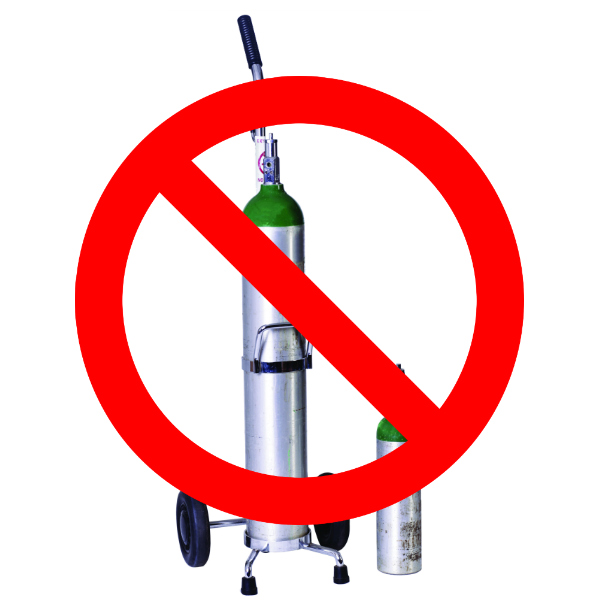
Take traditional oxygen tanks, for example. These devices have been around for many decades and they’ve provided millions of COPD patients with reliable oxygen. However, since the early 2000s, they’ve become nearly obsolete due to technological advancements in the oxygen industry. While oxygen tanks are still popular, most people prefer having a portable oxygen concentrator instead. Rather than being heavy, bulky, and intrusive like oxygen tanks, portable oxygen concentrators are ultra-lightweight, comfortable, and convenient. And most importantly, they provide patients with reliable medical-grade oxygen.

One of the most popular types of POC is a pulse dose POC. These concentrators closely track your breathing rate and administer oxygen only when you’re inhaling. In other words, your concentrator battery will last much longer than it would with a standard continuous flow concentrator because it isn’t having to constantly work to put out oxygen. The Inogen One G5 and the Caire FreeStyle Comfort are two of the most popular pulse dose units because they both weigh under 5 pounds, they have low failure rates, and they’re backed by some of the most reputable brands in the industry.
Choosing the Right Nasal Cannula
Aside from having the right concentrator, having the right nasal cannula is one of the best things you can do to make supplemental oxygen less intrusive. The nasal cannula is the part of the oxygen tubing that allows the oxygen to flow freely into your nose so that you can inhale it. However, as you can imagine, it can be quite annoying having the cannula in your nose all the time. Many people report experiencing irritation or dryness in their nostrils. Also, many people report experiencing irritation on their ears where the oxygen tubing rests.
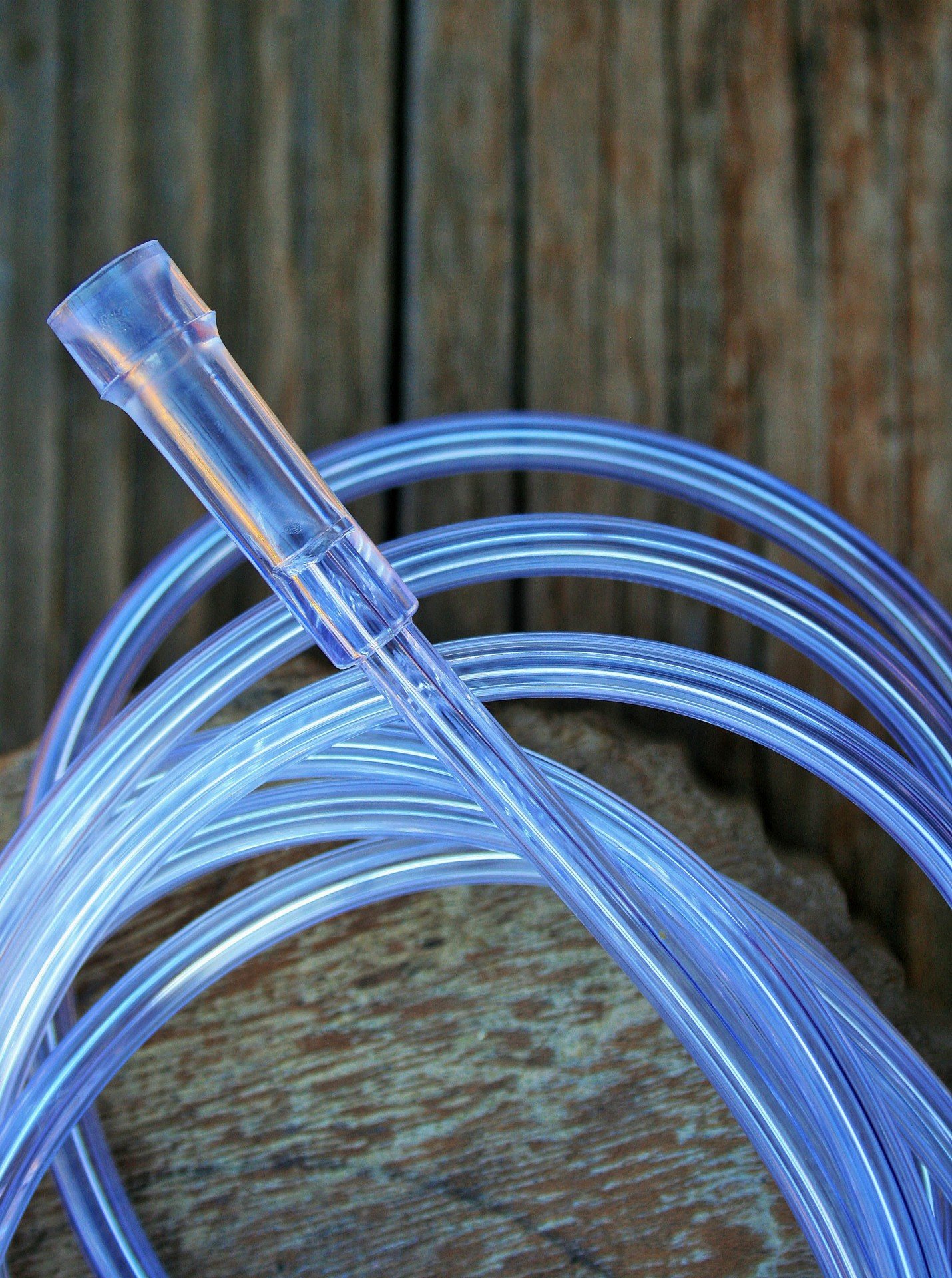
The simplest solution to this problem is to use an ultra-soft nasal cannula that isn’t as abrasive as the standard cannulas. Many oxygen concentrators also have the option to add a humidifier to the device which prevents the nostrils from drying out after extended periods of use. There are also many different types of nasal sprays and lubricants on the market that you can apply before and after using your oxygen concentrator. However, be sure not to use petroleum-based skin products because these are highly flammable and will be made even more flammable as medical-grade oxygen is applied.
Find the Right Oxygen Accessories for Your Lifestyle
Everyone has a different lifestyle. Some people prefer to stay at home while others prefer to be out of the house as much as possible. So, it goes without saying that not everyone has the same oxygen needs. The amazing thing about portable oxygen concentrators is that they can be customized to different lifestyles with the use of different accessories. For example, if you own the Caire FreeStyle Comfort, you’ll be able to choose between the standard carrying case and the backpack. The former is better for people who want to minimize the amount of weight they’re carrying while the latter is great for anyone who wants to carry a lot of extra personal belongings.

Another decision you’ll have to make is what size of batteries you will need. Most portable oxygen concentrators out there come with several different sizes of battery and you can make a decision based on how long you typically stay out of the house. For example, the Inogen One G5 offers two different battery options — 8-cell and 16-cell. If you just take a quick trip out of the house to go to the grocery store, you might only need the 8-cell battery. However, if you travel around a lot, you might want the 16-cell battery which offers about twice the battery life.
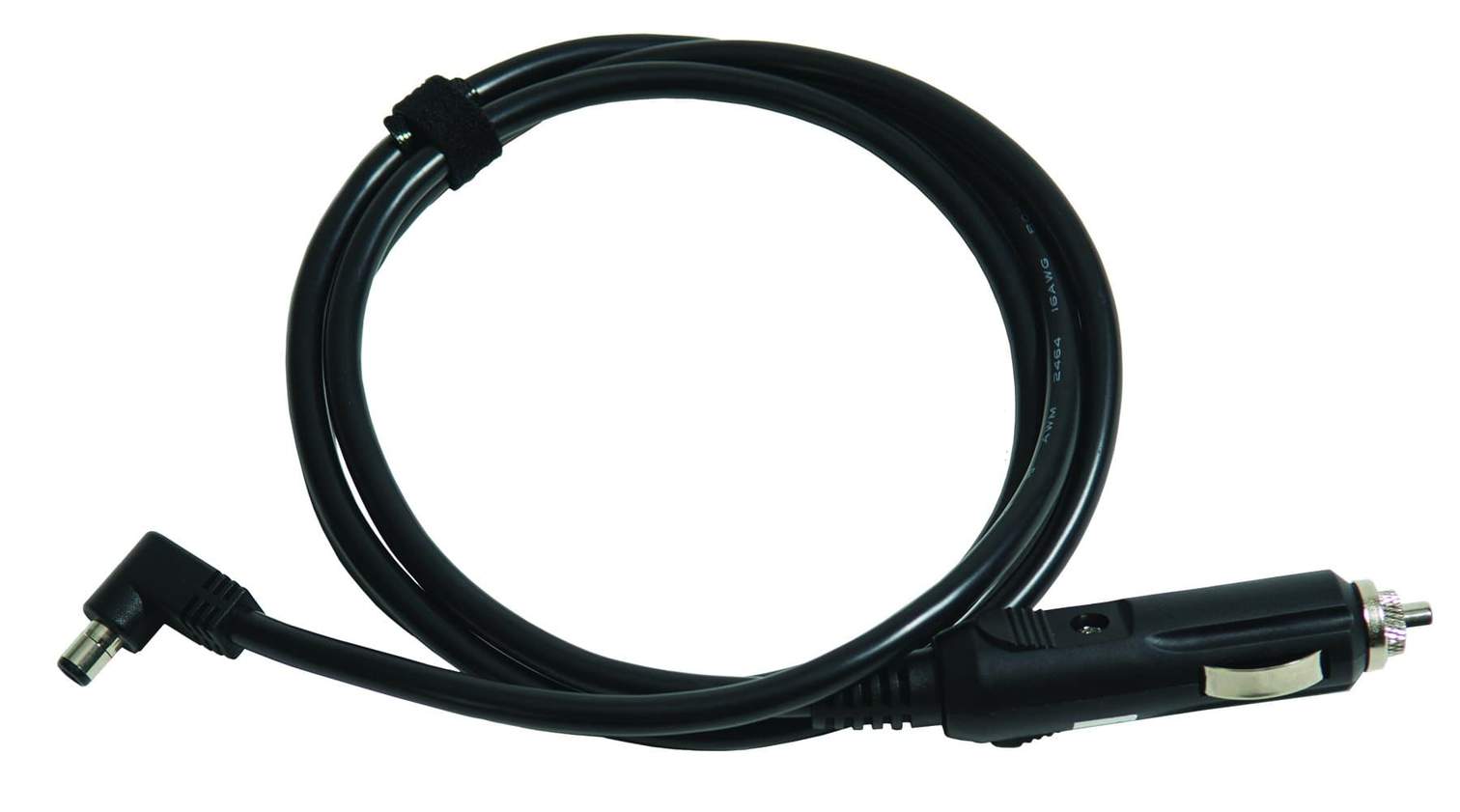
If you’re someone who likes to take road trips, a DC charging cable is a must-have accessory. DC charging cables allow you to charge your POC via a car outlet which is incredibly handy if you’re going to be in the car for hours on end. The best part is that many POCs can be used while they’re charging, so whenever you leave the car to sightsee, you’ll have a fully charged battery to work with.
Take Some Time to Read the User Manual
Think of your portable oxygen concentrator user manual as your all-in-one guide for using your new device. It will teach you everything you need to know from turning the device on to adjusting the flow rate and understanding the different visual and audible alarms. While it may be tedious to sit there and read through the whole manual in one sitting, you should at least sift through it in order to learn the basics of how to operate it. This way, if you’re out of the house, you won’t be left to wonder what a specific button or function does.
{{cta('b59df0c1-c4de-47a8-8e1c-0d33d4b414aa','justifycenter')}}
Another important thing you’ll learn from the user manual is how to troubleshoot your portable oxygen concentrator. Troubleshooting refers to the steps that you take if something should go wrong in order to remedy the issue. You’ll be surprised to find that the majority of issues that portable oxygen concentrators have can easily be solved with a quick fix. Since POCs are electronic devices like computers, simply turning the device off and then on again can solve a lot of issues, so it’s often the first thing you should try when something goes wrong.
Keep Up With Device Maintenance
Like with any oxygen therapy device, it’s important to take care of your portable oxygen concentrator. The good news is that maintaining a POC is much easier than many people realize and it won’t cost you an arm and a leg to do it either. One thing you should do regularly is clean your device. As you can imagine, when you’re carrying your POC with you everywhere, it can start to gather dirt and germs which could make you sick or even damage the device. Simply wipe your device down with a disinfectant wipe once or twice a week and make sure you don’t get any of the electrical components wet. You should also be sure to take off the particle filter occasionally, wash it off, and replace it because this protects the internal components of the POC and also purifies the air you breathe.
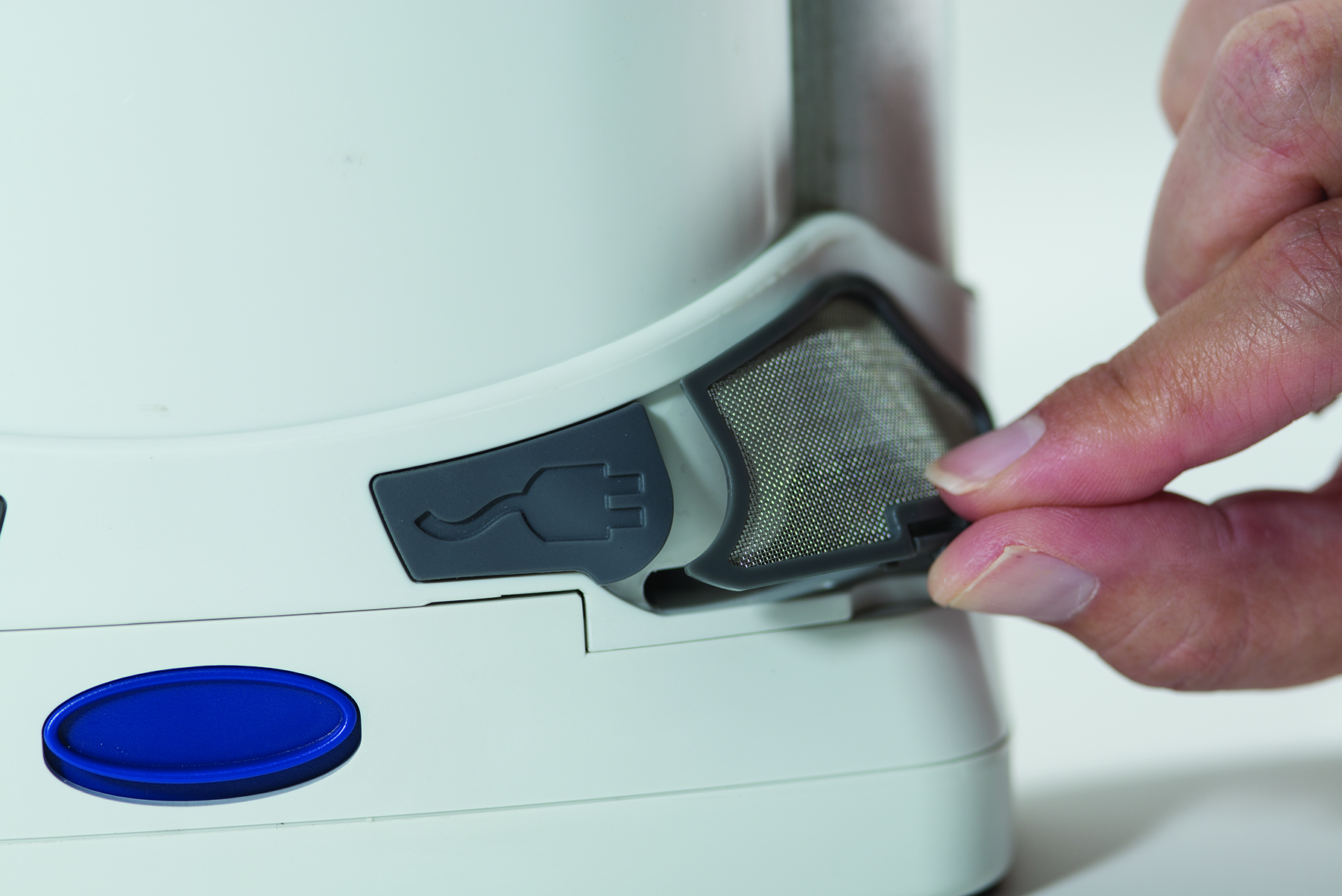
Two other components you should replace regularly are your nasal cannula and your sieve beds. The nasal cannula needs to be replaced regularly because it can get worn out over time and starts to get really dirty. The sieve bed is a special filter inside your POC that removes specific gases from the air like nitrogen which enables you to receive medical-grade oxygen. If the sieve beds are in poor condition, you may not be receiving the oxygen you need to stay healthy. Every device is different, but generally speaking, you should replace the sieve beds every year or two. Ideally, your nasal cannula should be replaced every two weeks.
Plan Your Trips Carefully
You would not be making full use of your portable oxygen concentrator if you didn’t get out of the house and enjoy the freedoms that you used to before starting oxygen therapy. There are near endless possibilities when you own a POC, but it’s still important to be prepared every time you leave the house. For example, if you leave the house without fully charged batteries, you might find yourself in a difficult situation where you either have to find a place to recharge them or return home earlier than expected. The best way to prevent this is to always know how long you will be out of the house. Make sure you have enough battery life to get you through the day plus a few extra hours to account for any change of plans.
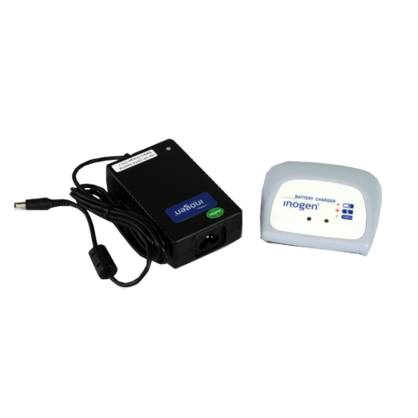
One thing that’s really handy to have on long trips away from home is an external battery charger. Most portable oxygen concentrator batteries need to be attached to the unit in order to be charged. This means that you can only charge one battery at a time. However, with an external battery charger, you’ll be able to charge two batteries at once. This is very useful if you’re going to be on the go a lot and don’t want to sit around waiting for your batteries to charge.
Speak With Your Doctor
Last but certainly not least, you should speak with your doctor if you’re having trouble incorporating oxygen therapy into your life. Your doctor should be the first person you contact if you’re thinking about making changes to your oxygen treatment plan because he/she will be able to tell you whether or not it is safe to do so. Many people believe that if there are no immediate symptoms caused by reducing their oxygen flow, then it’s safe to do so. Unfortunately, this is not the case. Although you may feel fine at first, prolonged hypoxemia can cause a lot of harm to your body including dizziness, confusion, and even organ damage. By talking to your doctor you may be able to work out a treatment plan that takes into consideration both your comfort and your long-term health goals.
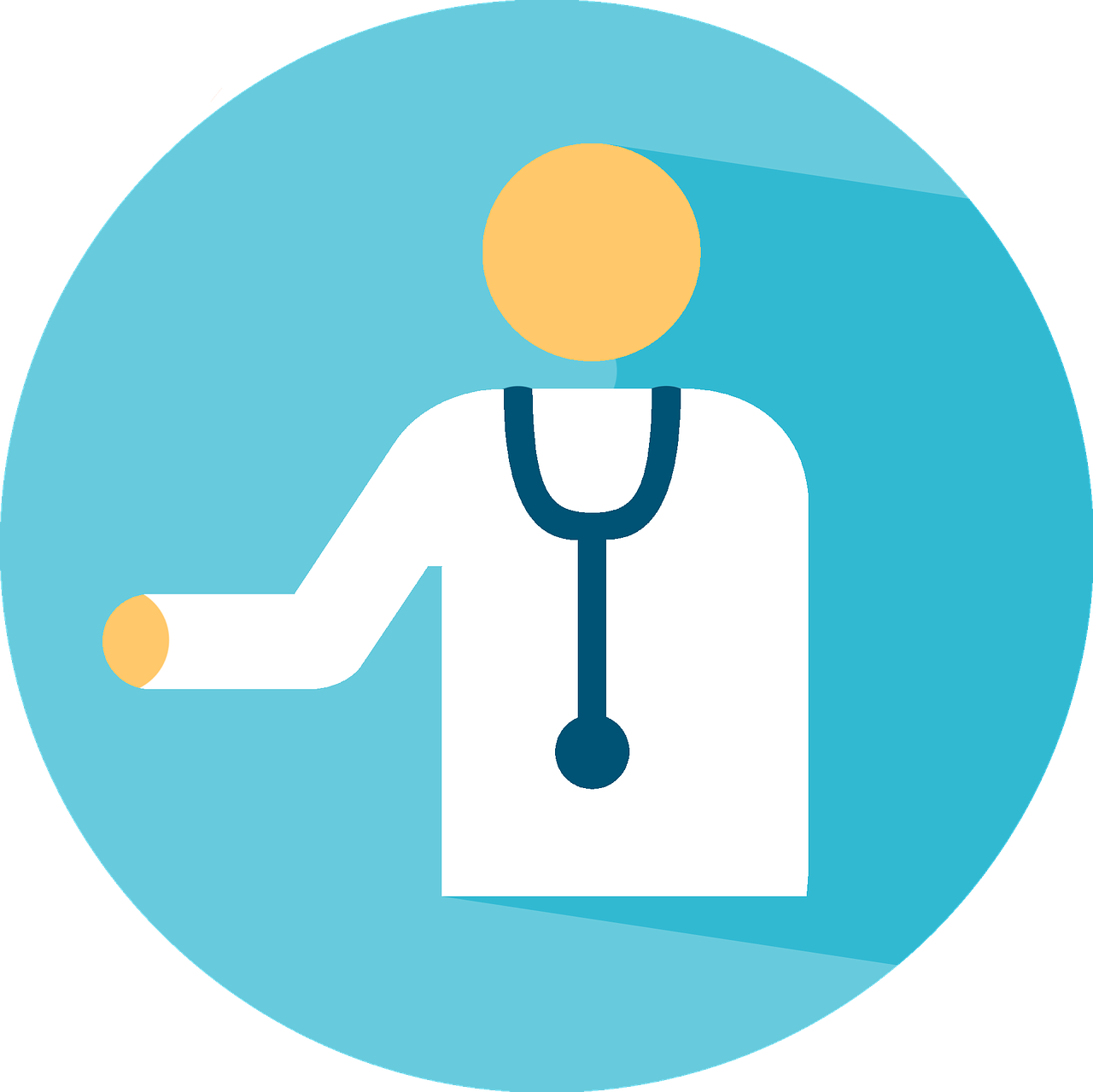
Conclusion
Having a reliable supply of medical-grade oxygen is essential for any COPD treatment plan. Unfortunately, many people end up purchasing the wrong oxygen device for their needs and find that it’s too intrusive for it to be worth their time and effort. This is why it’s recommended that COPD patients use small, lightweight, and convenient portable oxygen concentrators like the Caire FreeStyle Comfort or the Inogen One G5. After using a POC for the first time, many patients realize that oxygen therapy doesn’t have to be intrusive or cause stress in their lives.
Here at LPT Medical, we take your oxygen needs very seriously. We don’t want you to be stuck with an oxygen device that you’re unhappy with or that isn’t meeting your needs. This is why we have a team of oxygen concentrator specialists who will take the time to understand what you’re looking for, then align you with the oxygen device that will best suit your individual needs. We also have a number of financing and buying options available. Contact us either by phone or email to learn more.
.png)
No matter what stage of life you are in, it’s always a good idea to find new ways to save money. If you’re someone with chronic obstructive pulmonary disease (COPD) or a similar lung disease, one of the best ways you can cut costs is by looking for ways to save money on medication, medical equipment, and other medical expenses. This study found that the average annual healthcare cost per COPD patient is around $4,147 and that increased disease severity is associated with higher healthcare costs.
Unfortunately, many people find that it’s not as easy as they thought it would be to save money on medical expenses. While there are many ways to save on medications, things like doctor’s visits, hospital visits, and pulmonary rehabilitation are pretty set in stone. And trying to avoid these things all together to save money could put your long-term health at risk. Be sure to visit a medical specialist whenever you need to, and find other ways to save such as on your medical oxygen equipment.
{{cta('fa8abc2a-1e88-4fa3-82fd-1cb5b9ed43b2','justifycenter')}}
If you’re just getting started with oxygen therapy, it might not be immediately evident how many options you have available to you and that just a few considerations could save you hundreds, if not thousands of dollars when it comes to purchasing and maintaining your oxygen device. In this post, we are going to highlight some tips for getting the best deal on an oxygen concentrator and avoiding some of the common pitfalls many people experience as a first-time oxygen buyer. If you have any questions, be sure to leave them in the comments or reach out to us by phone or email.
Find the Right Retailer to Buy From
By far the most important thing to remember if you’re looking for a good deal on an oxygen concentrator is to find a reputable retailer to buy from. The internet has made it easier than ever before to find the exact product you’re looking for and have it delivered on your porch within a matter of days. However, the internet has also opened the door for scammers and dishonest companies to get your money. This is why it’s so important to be prudent when it comes to the company that you work with.
![]()
Possibly the biggest scam you should be aware of when buying oxygen is companies that don’t ask to see your supplemental oxygen prescription. In the United States, oxygen is a “controlled substance” meaning it can’t simply be bought and sold freely without proof of medical necessity. If a company sells you oxygen without having you provide a prescription from your doctor, they are either doing so illegally, or they’re selling you low grade oxygen that will not meet your medical needs. Either way, these are deceptive business practices and they could be deceiving you in other ways as well.
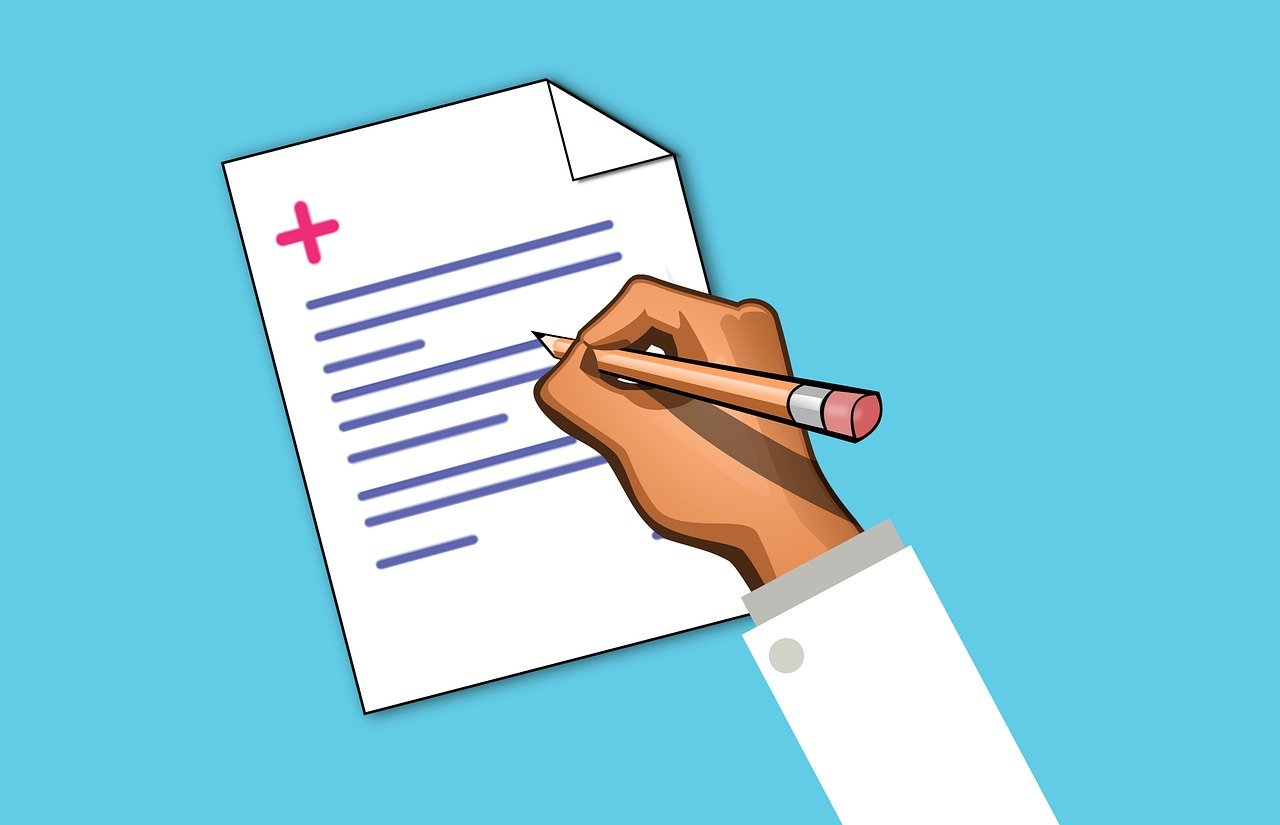
Another thing to watch out for is something called “recreational oxygen.” This is not necessarily a scam or deceptive but it can lead to confusion when you’re trying to buy an oxygen concentrator to treat your COPD. Essentially, recreational oxygen is a type of low-grade oxygen used by hikers, climbers, or people traveling to higher altitudes than they’re used to. Allegedly, using these cylinders periodically can help you prevent breathlessness and altitude sickness, but there is little evidence to suggest this is the case. The important thing to remember is that “recreational” oxygen does not equate to “medical” oxygen.
.png)
Ultimately, the reason you should focus on finding a reputable oxygen retailer to work with is because purchasing the wrong device will set you back even further financially. Many people are ecstatic to find an oxygen device for a couple hundred dollars only to find out that it’s not going to meet their medical needs and that the company they bought it from doesn’t accept returns. Aside from breaking the bank, buying an oxygen device from a shady company can compromise your health and leave you without oxygen when you need it the most.
Decide Between New, Used, and Refurbished
Another way to get a great deal on an oxygen concentrator is to consider different buying options like new, used, and refurbished units. We wrote a post discussing all of the different buying options for portable oxygen concentrators in a different post, so be sure to check it out for more information. However, we’ll summarize the main points here for your convenience.
A “new” oxygen concentrator is one that has never been opened, turned on, or used in any way since it was manufactured. The obvious benefit to having a new concentrator is that the unit has no wear and tear and that you can expect it to last many years without needing repairs. What’s more, most new concentrators come with a manufacturer warranty which will cover you for several years if anything is wrong with the unit. Although rare, manufacturing defects are a possibility, so having the warranty will guarantee you repairs or a full replacement if your unit doesn’t work.

A “used” oxygen concentrator is one that has been owned by another oxygen patient in the past. The great news though is that “used” doesn’t mean that the unit is old and worn out. Some oxygen patients never use a unit or it is only lightly used before returning it. What this means is that you’ll be paying a discounted price on an item that is in “near mint” condition. When you purchase a concentrator from LPT Medical, you can rest assured that it’s been tested beforehand to ensure full functionality.
A “refurbished” portable oxygen concentrator differs slightly from a used unit in that repairs or replacements have been done to it. One of the common part replacements you’ll see in a refurbished oxygen concentrator are the sieve beds. These are specialized filters that remove unwanted gas from the air, allowing you to receive medical-grade oxygen. Over time, sieve beds can become worn out and need to be replaced.
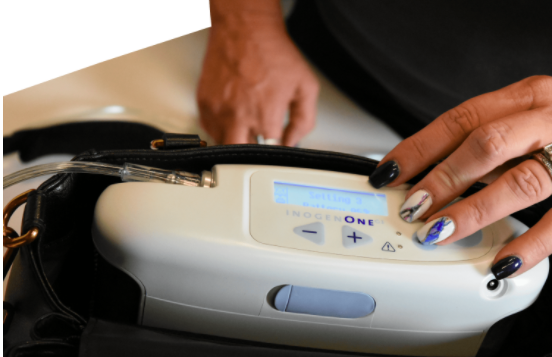
One final option for you to get your hands on an oxygen concentrator is through renting one. This is not always the most practical option, but if you know you will only be needing one for a few days or weeks, it may be your most cost-effective option. Renting an oxygen concentrator is ideal for people who typically use an oxygen tank or stationary concentrator at home, but want to be able to go on a trip without having to hassle with lugging their tank around or finding a place to refill it.
Overall, there are benefits to each of the buying options, it’s just a matter of your individual situation. Be sure to ask our oxygen concentrator specialists here at LPT Medical if you have any questions or concerns.
Take Advantage of Package Deals
Package deals are one of the best ways to save money on an oxygen concentrator. A package deal is when you buy accessories alongside your oxygen concentrator unit and get a discount on your final price. This means you’ll be able to save a lot of money if you buy everything up front rather than buying each accessory separately. Package deals are not always going on, so be sure to talk with your oxygen concentrator specialist who can let you know what’s available.
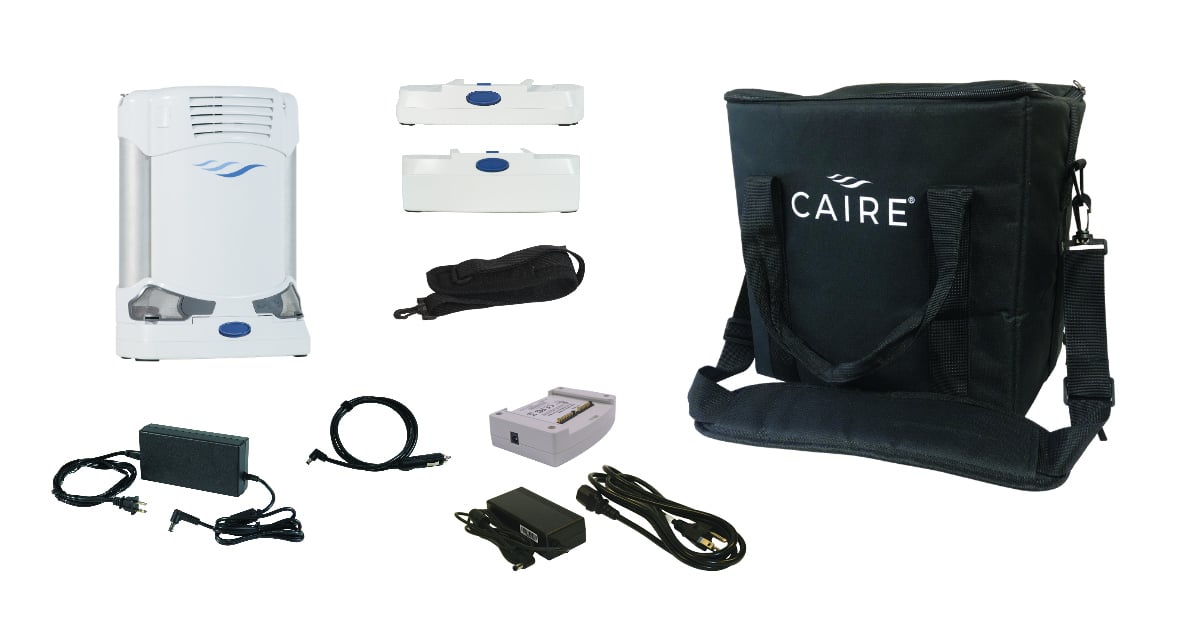
One package deal many people enjoy is one that offers a carrying case, battery, and DC charging cable. This way, you will have the ultimate freedom to move around the minute you receive your oxygen concentrator instead of having to order additional accessories later on down the road. Most oxygen concentrators come with the standard size battery but if you think you will need a battery that lasts longer, you can always upgrade it and maybe even get some additional savings that way.
{{cta('b59df0c1-c4de-47a8-8e1c-0d33d4b414aa','justifycenter')}}
Another reason to take advantage of package deals is that it could help you save money on shipping. With very few exceptions, it’s almost always cheaper to ship everything in one box rather than individually. While it may not seem like that much extra to ship a couple of accessories, the costs can really start to add up.

Two package deals we highly recommend are the Caire FreeStyle Comfort package and the Inogen One G5 package. These are some of the top-performing concentrators currently on the market, and when you consider everything that comes with them, you’ll see why they’re so popular. Just the base packages include an 8-cell battery, AC and DC charging cables so that you can charge your device anywhere, a carrying case, oxygen tubing, and a 3-year manufacturer warranty. Speak with one of our oxygen concentrator experts to see which one of these would be best for you.
Take Advantage of Sales
Sales are another thing you should keep an eye out for when you’re shopping for a portable oxygen concentrator. We offer a lot of oxygen concentrator sales here at LPT Medical because we want to get these devices to as many COPD patients as possible, even people who are on a tight budget. Currently, we are running a deal where you can get a free online pulmonary workshop course with the purchase of a new portable oxygen concentrator.
.jpg)
This program is called Thrive eLearning and it provides access to one-on-one counseling, support groups, and online courses that help you slow the progression of COPD. One of the important things you’ll learn during this course is breathing exercises which are a powerful tool for alleviating symptoms of breathlessness, fatigue, and chest pain which are commonly associated with COPD. You’ll also be able to connect one-on-one with doctors, caretakers, and other healthcare professionals, saving you time and money.
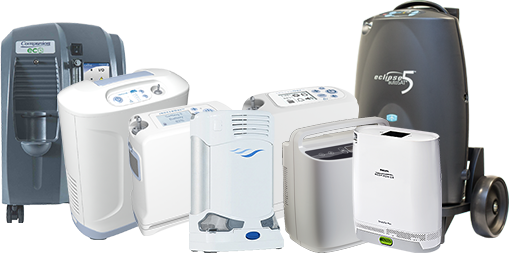
Sales are pretty common in the oxygen industry because the market is always changing. For example, we might offer a sale on one concentrator because a newer concentrator has hit the market. This is the perfect opportunity to get a great deal on a slightly older unit that still meets your needs perfectly. One of the best ways to keep up with these sales is to join our mailing list by filling out the form at the side of the page. You’ll be notified immediately whenever we have a new promotion going on!
Consider Your Financing Options
“Financing” an oxygen concentrator means splitting the payments up into more manageable monthly payments. While financing typically doesn’t save you money in the long run, it does lead to more financial security, because you won’t see the full cost of the concentrator come out of your bank account all at once. If at any time, you decide you want to pay off the rest of the concentrator all at once, you can do so without incurring any additional fees. Before committing to the financing terms, however, you should make sure that the company doesn’t charge a bunch of interest on top of the original price. Make sure you know what the exact amount of interest is and not just the monthly payments.
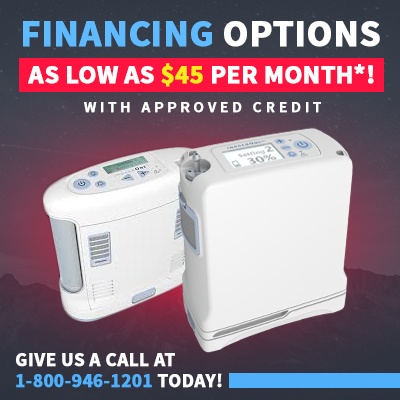
Conclusion
Oxygen concentrators are the ideal oxygen therapy device for most COPD patients. They’re very lightweight, compact, versatile, and most importantly, they provide you with medical-grade oxygen that you need to stay healthy. But if you want to get the best deal on an oxygen concentrator, you need to make several considerations first. Most importantly, you need to work with an oxygen concentrator retailer that you can rely on.
{{cta('43b79c5e-6bd6-4f02-ac27-2d038d20c146','justifycenter')}}
Here at LPT Medical, we take your oxygen needs seriously, and as such, we will take the time and diligence to understand both your medical and financial needs, then use our knowledge of the industry to align you with the perfect concentrator for you. It’s our goal to get an oxygen concentrator in the hands of any and all COPD patients who need them, so we will work with you to provide you with the best deal and we’ll even work with your healthcare provider to ensure you have all the necessary paperwork to buy an oxygen concentrator legally.
To get started, simply give us a call or shoot us an email.
.png)
In the 21st century, we are highly dependent on energy sources like natural gas and electricity. We use fuel to power our cars, cook and heat our homes, and we use electricity to charge our phones, computers, and more. But what happens when we lose access to these resources due to a natural disaster or some other problem? In some situations, this can be a minor nuisance; but in others, it could be life-threatening.
Fortunately, hospitals and other medical facilities have back-up generators that allow them to use life-saving medical equipment even in the event of a power outage. But what about individuals living at home who are reliant on electronic devices? What safety measures are in place to ensure these people are able to use the medical devices they need to stay healthy?
The truth is that there aren’t many safety nets in place to help people experiencing power outages, so this is why it’s always important to be prepared, especially if you depend on electricity to power your medical equipment. In this post, we are going to highlight all the steps you should take to be prepared for a power outage if you have COPD or any other chronic respiratory disease.
What Causes Power Outages?
Before we can discuss the different ways to plan for power outages, it’s important to understand what actually causes them. According to the U.S. Energy Information Administration, the average household experienced one outage in 2016, accounting for 112 minutes of lost power. Although this is the average, this does not mean that power outages cannot last longer. Depending on what causes the power outage, they could last anywhere between several days and several weeks. So you should always plan for the worst-case scenario.
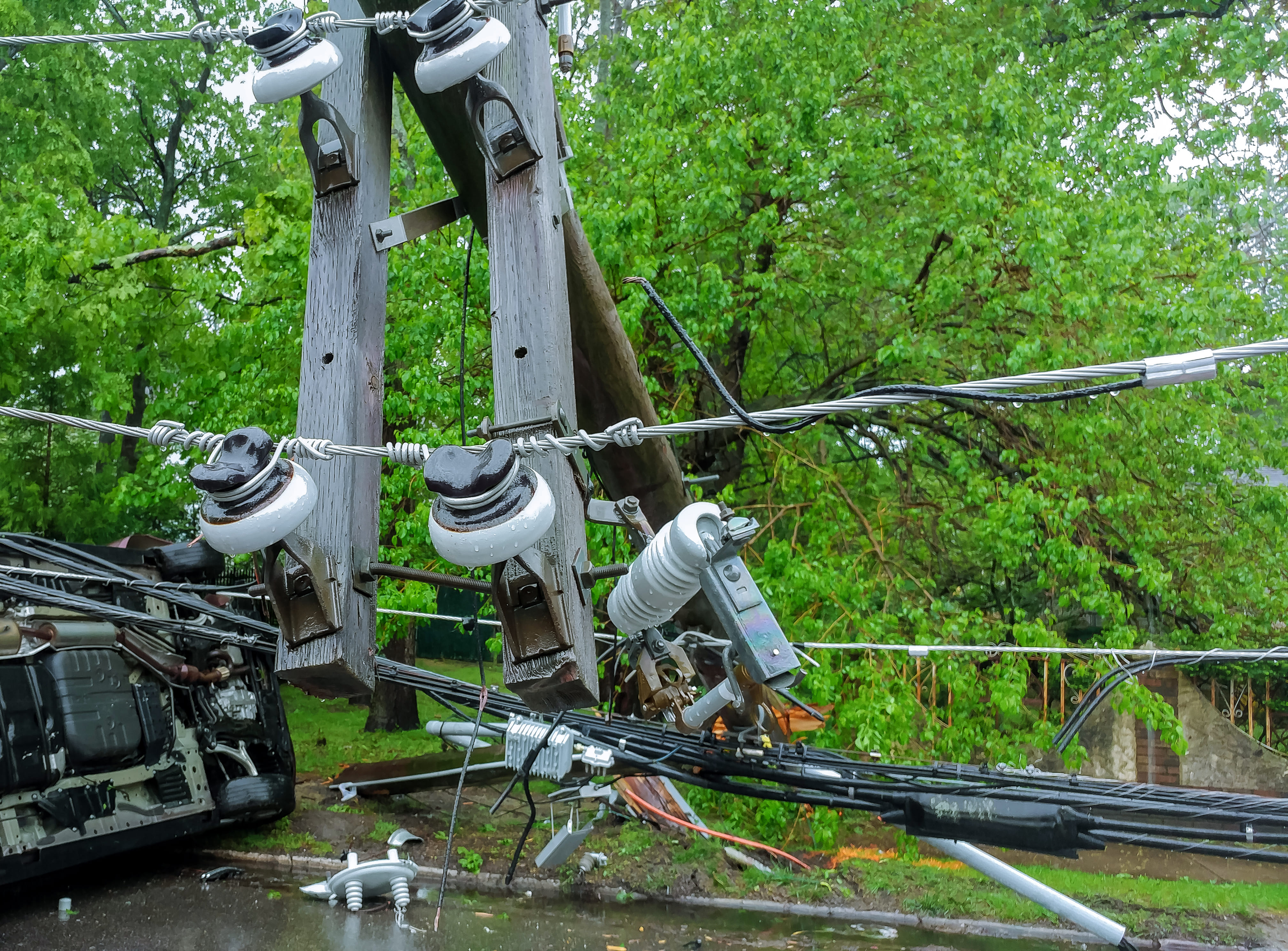
According to Constellation, the most common cause of power outages are severe weather and natural disasters. High winds, snowstorms, and thunderstorms can all knock power lines over causing entire neighborhoods to lose power. Extreme temperatures can also lead to power outages if it results in people overusing their air conditioners or heaters. There are so many different variables that come into play, so it’s best to always be prepared for an outage, regardless of the time of year and what the weather is like.
Install an Emergency Power System
The first thing you should do to prepare for power outages is to have an emergency power system in your home. There are many different options for powering your home in the event of an emergency, so you will have to do a lot of research to determine which one will best meet your needs. However, a good place to start is by contacting your utility company. Some utility companies provide backup generators for people with medical conditions free-of-charge. Others may add an additional fee to your monthly utility bills. Below are some of the most widely used emergency power supplies:
{{cta('fa8abc2a-1e88-4fa3-82fd-1cb5b9ed43b2','justifycenter')}}
Home Backup Generators
A home backup generator, also known as a standby generator, is a permanent power generator that is installed outside of your home. These generators resemble air conditioning units and they run off of your existing natural gas or LP fuel supply. While home backup generators are the most costly option for backup power, they are also the most convenient and reliable. These units are designed to turn on automatically when a power outage is detected, so you won’t have to go outside to turn it on. Since these generators are permanent, they will give your home’s value a nice boost if you ever decide to sell it. As you can imagine, home backup generators are extremely advanced, so you will need to hire a professional to install one for you.
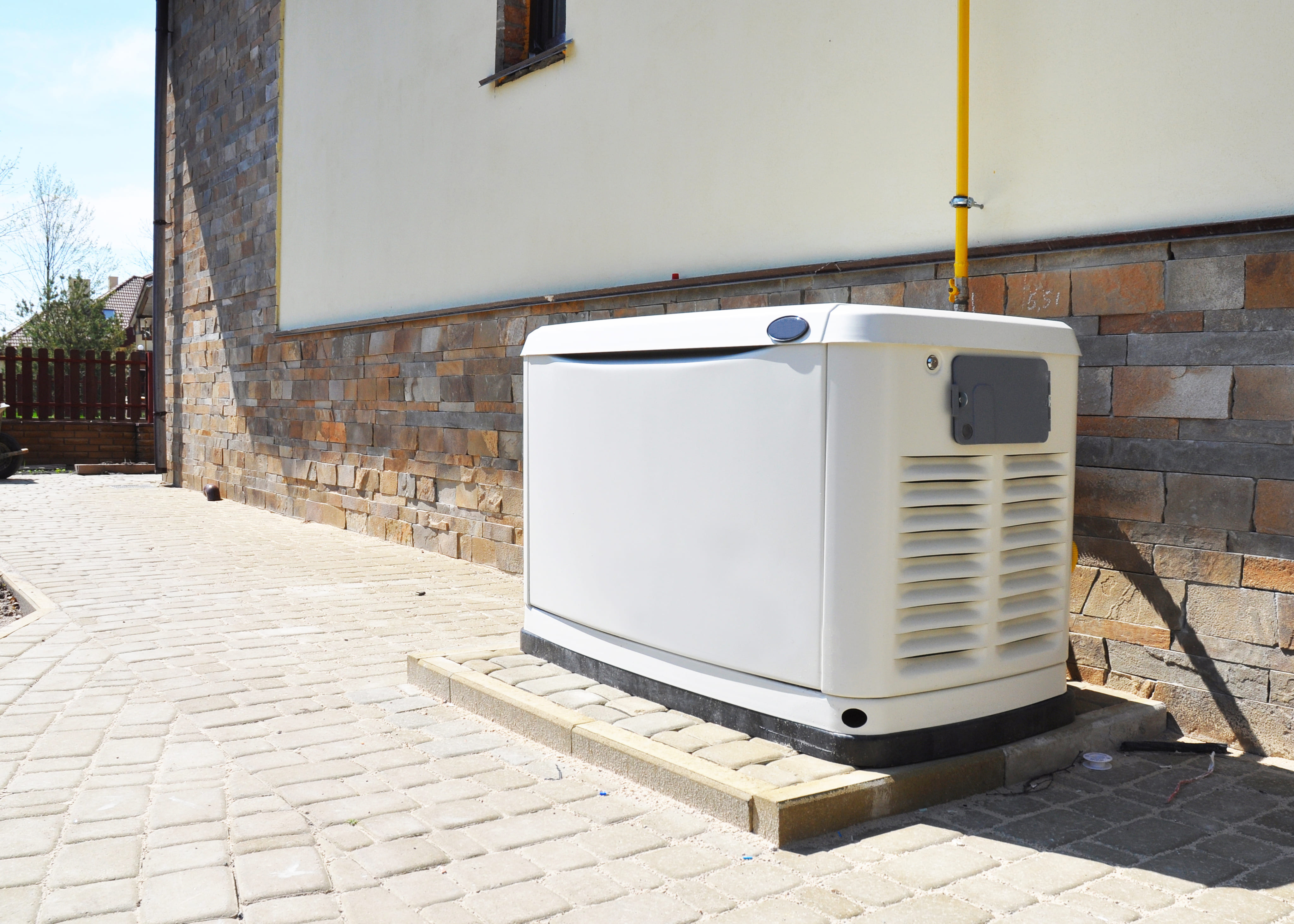
Portable Generators
A portable generator, also known as a recreational generator, is a type of generator that’s commonly used for camping and other outdoor activities. However, they can also be a good way to power your home during a power outage. Unfortunately, these devices don’t start automatically when your power goes out, so you’ll have to go through the hassle of setting it up when your power goes out. What’s more, these units use fossil fuels which can exacerbate your respiratory symptoms, so be sure to never use one inside of your home. The benefit of portable generators is that they are much more affordable than home generators.
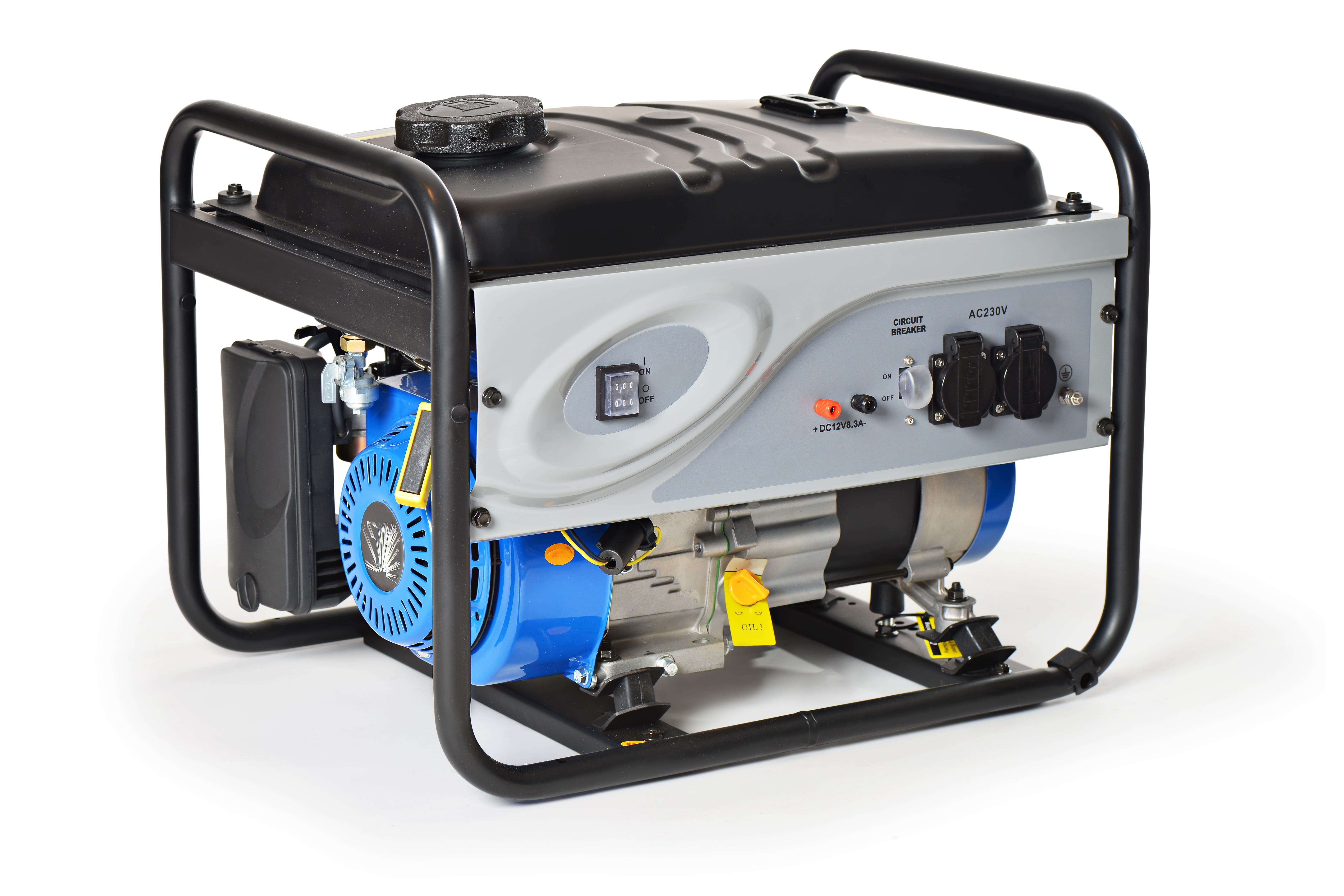
Solar Generators
Just like the name suggests, solar generators are powered by the sun. The only scenario where you should purchase a solar generator is if you live in an area that is very sunny to ensure that your generator is fully charged when you need it most. Since these generators don’t burn any fuel, they won’t exacerbate your lung symptoms and they aren’t noisy. Solar generators are fairly expensive but they are worth the price for many people.
Install a Medical Alert System
An emergency alert system is a device designed to alert medical professionals if you experience a medical emergency like a COPD exacerbation or a fall. Each medical alert system comes with a pendant that you wear around your neck and a receiver that plugs into the wall. In the event of an emergency, press the button on the pendant and an ambulance will be dispatched to your home.
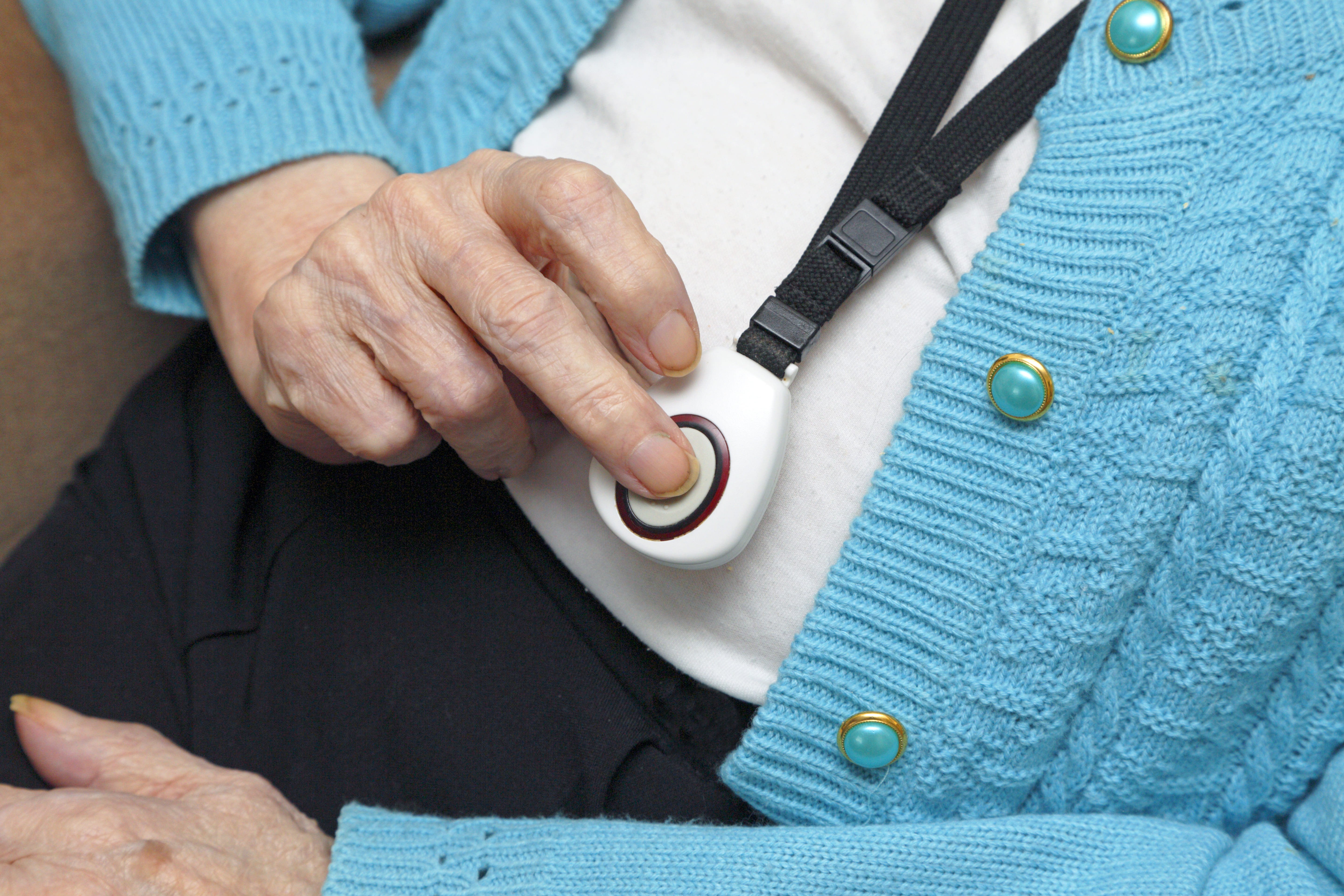
What many people don’t know is that many medical alert systems have backup batteries that will kick in if there is a power outage. Generally speaking, most backup batteries will last a day or two, but you should speak with the company that manufactures it to learn the full details. Medical alert systems are an invaluable tool to have when the power goes out so be sure to get one installed as soon as possible.
![]()
Another way to prevent falls when the power goes out is to have a flashlight on hand. Chances are, even if you have a generator in your home, you’re going to want to conserve energy by keeping as many lights off as possible. A flashlight will help you navigate your home safely while doing so.
Keep Backup Batteries or Oxygen Tanks
COPD patients have a variety of options at their disposal when it comes to medical oxygen. Some of the most popular options include oxygen tanks, liquid oxygen tanks, and oxygen concentrators. The one you choose as your “backup” oxygen supply in the event of a power outage will depend on what your needs are.
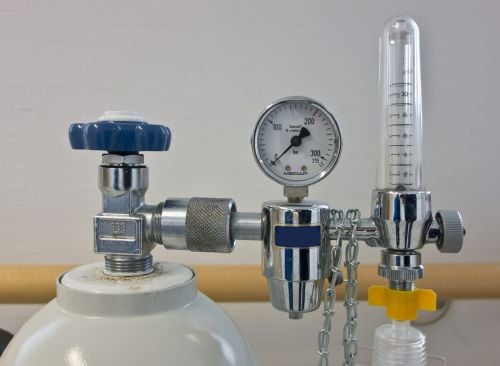
The most notable benefit of having backup oxygen tanks is that they don’t require electricity in order to operate. Oxygen tanks have compressed oxygen inside them, so all you need to do is connect your nasal cannula and you’ll have access to medical-grade oxygen. However, the downsides of oxygen tanks are that they are very heavy and bulky so you won’t be able to get around your home while you’re using one.
Liquid oxygen tanks work a little differently than normal oxygen tanks. Rather than storing the oxygen as a gas, these tanks store oxygen as a liquid. Since gas is expanded, storing it as a liquid allows you to carry more of it with the same size and weight tank. This will allow you more freedom in the event of a power outage. However, there is one glaring flaw with liquid oxygen tanks which makes them impossible to recommend for this situation. Oxygen needs to be stored at very low temperatures in order to stay as a liquid, so over time liquid oxygen will begin to evaporate, According to the Lung Institute, liquid oxygen will evaporate in a week or two depending on the type of tank you have.
.png)
Last but certainly not least there are oxygen concentrators. Unlike the previous two oxygen devices, concentrators are electronic devices. They work by drawing in ambient air and putting out medical-grade oxygen. It may seem silly to use an electronic oxygen device during a power outage, but you may be surprised to find that they are actually the best backup oxygen device for this situation. Portable oxygen concentrators run off detachable batteries that can be stored for emergencies.

These batteries are also very small and only weigh about a pound so you can store as many as you’d like. One important thing to note is that batteries should be used from time to time in order to help them keep their charge. Be sure to swap out the batteries occasionally so that each one is being used. Let’s take a look at some of the best portable oxygen concentrators to have during a power outage.
Best Oxygen Concentrators for a Power Outage
The Caire FreeStyle Comfort
The FreeStyle Comfort is currently one of the most popular portable oxygen generators on the market. It’s a pulse dose portable oxygen concentrator meaning it has built-in technology that tracks your breathing and only delivers oxygen when you inhale through the nasal cannula. What this means is that it’s able to conserve electricity while still giving you the oxygen you need to stay healthy. With the larger 16-cell battery, the FreeStyle Comfort can run for up to 16 hours on one charge.

The FreeStyle Comfort is one of only a few portable oxygen concentrators that weigh at or under 5 pounds. Additionally, it’s one of the most compact concentrators so you can carry it around on your shoulder with ease. In the event of a power outage, the FreeStyle Comfort will provide you with plenty of battery life, ease-of-use, and mobility. It has a maximum oxygen output of 1,050 milliliters per minute (ml/min).
The Inogen One G5
The Inogen G5 is another pulse dose portable oxygen concentrator under 5 pounds. With the 8-cell battery, the G5 weighs only 4.7 and has a battery duration of 6 ½ hours. The battery life can be doubled with the 16-cell battery affording you up to 13 hours of battery life on one charge. Just like with the FreeStyle Comfort, the batteries are very small and lightweight so you can store as many as you think you’ll need to make it through a power outage.
.png)
One of the great things about the Inogen G5 is the number of accessories there are for it. The G5 external battery charger is very useful if you’re planning for a power outage because it allows you to charge one battery separate from the G5 unit itself. In other words, it allows you to charge your batteries more quickly so that you can always be prepared. Another great accessory to have during a power outage is the DC charging cable. This is a type of cable that allows you to charge your G5 in the car via a cigarette outlet. Keep a DC charging cable in your car so that you’re always prepared if you need to leave the house in a hurry. The best part about this is that you can use your device while it’s charging meaning there will never be an interruption in your oxygen treatment.
The Respironics SimplyGo
The last portable oxygen concentrator we’d like to recommend for power outages is the Respironics SimplyGo. Certain patients are prescribed continuous flow oxygen which is where oxygen is administered irrespective of the user’s breathing rate. When this is the case, the SimplyGo is the lightest and most reliable unit available to you. The SimplyGo has a maximum flow rate of 2 liters per minute (LPM) at it weighs only 10 pounds which is significantly lighter than most continuous flow POCs on the market. Unfortunately, the SimplyGo offers significantly less battery life than the aforementioned POCs, so you may need to keep even more batteries charged.

Create a List of Contacts
Having a convenient list of contacts you can call during a power outage is very important. You don’t want to be searching the internet using what little electricity you have to find out the number of your utility company or your neighbor’s phone number. Take some time right now to write down your contacts so that you don’t have to do it when an emergency occurs.
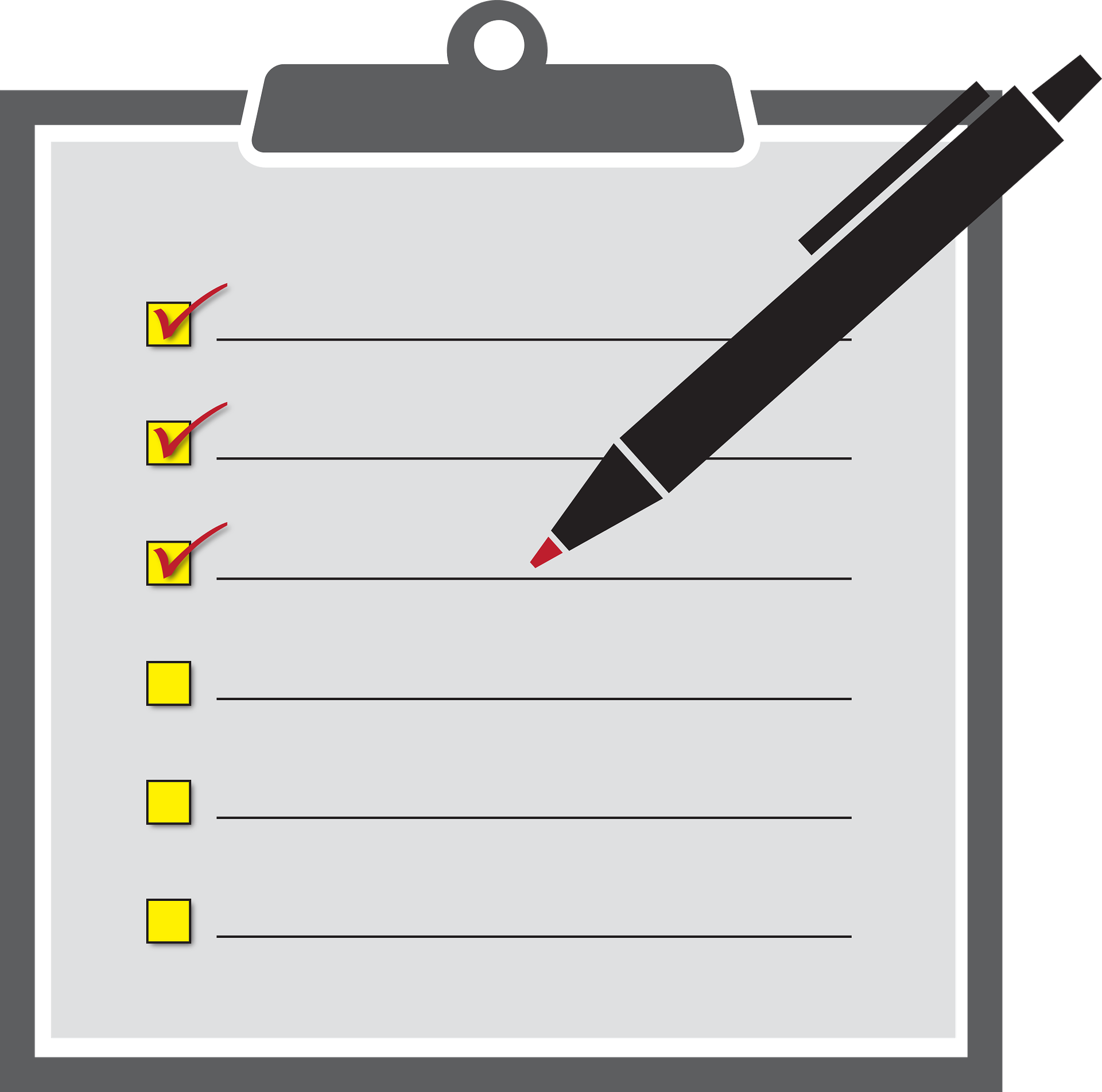
Firstly, you should write down the numbers of a couple of friends or family members who could come pick you up if your power is out. Secondly, you should have your doctor or pulmonologist’s number as well as the closest medical oxygen company. If you happen to run out of oxygen for one reason or another you can reach out to them and have them deliver some oxygen tanks. Lastly, don’t forget to write down the number of your utility company. Be sure to call them immediately when the power goes out so that you can plan accordingly.
Keep Non-Perishable Food in Your Home
One of the most notorious issues with power outages is that all of the food in your fridge will begin to spoil. This can be absolutely devastating if you like to keep your fridge well-stocked with lots of food and beverages. It’s a good idea to get in the habit of buying healthy non-perishable food at the grocery store that can hold you over if you experience a power outage. Apples are a great source of energy and they will stay fresh for up to a week while sitting on the counter. However, be sure to ask your doctor about non-perishable foods that are healthy for COPD patients.
.jpg)
Speak With Your Doctor
Last but certainly not least, you can and should speak with your doctor about managing your COPD during a power outage. Your doctor might have some helpful information or resources for you to refer to. Most likely, he/she will tell you the minimum flow rate you’re allowed to use on your oxygen tank or concentrator in order to maintain your blood oxygen levels. Also, be sure to ask your doctor if it’s okay to cease your pulmonary rehabilitation routine while the power is out so that you can conserve your oxygen supply.
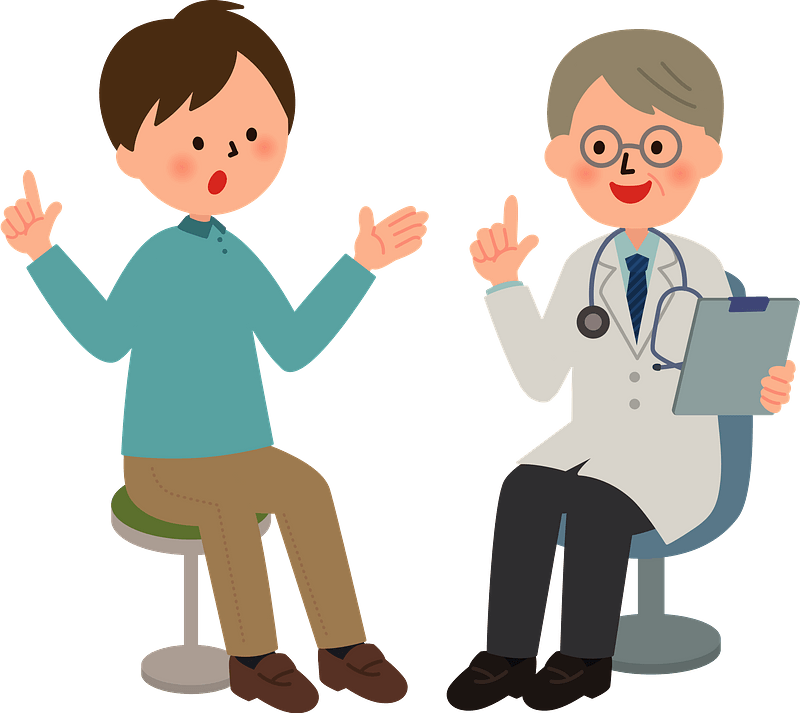
Conclusion
While it’s rare to experience a power outage that lasts more than a couple of hours, it’s crucial that you are prepared for the worst-case scenario. Studies have shown that power outages are associated with a greater risk of exacerbation and hospitalization in COPD patients. Ensuring that you always have access to a dependable medical oxygen supply will help you to stabilize your respiratory condition.
What’s more, you should work together with your doctor to create a power outage action plan. You may be able to reduce your oxygen flow rate in order to conserve your oxygen concentrator battery life during a prolonged power outage. And ideally, you’ll have some sort of backup generator that you can use to hold you over until the electricity returns to your home.
Here at LPT Medical, we can help you prepare for power outages by providing you with a durable and reliable portable oxygen concentrator like the Caire FreeStyle Comfort or the Inogen One G5. While we can’t guarantee that your battery will last the duration of the outage, we can help you find the best concentrator for your needs. Please don’t hesitate to reach out to us either by email or by phone.
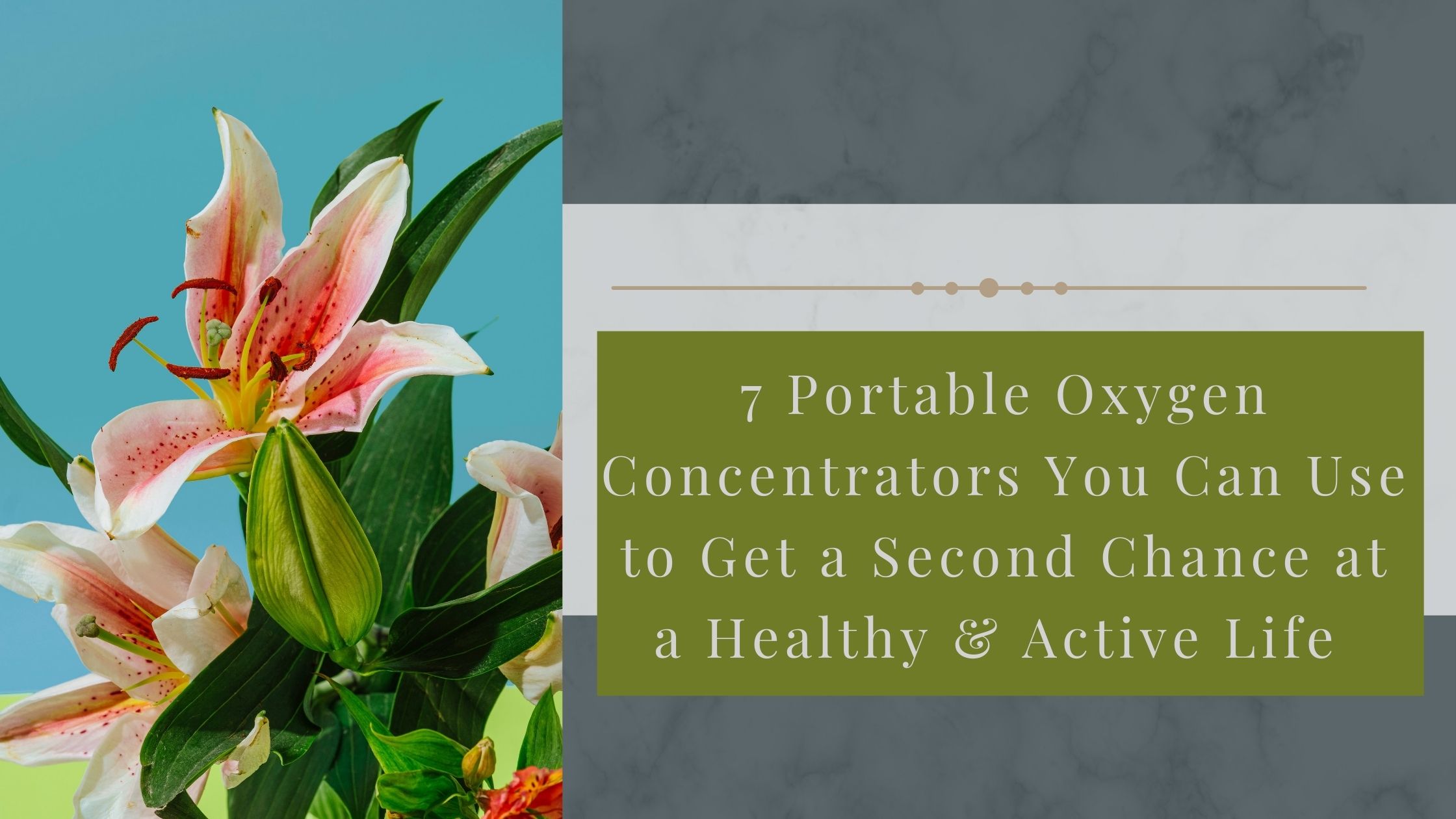
It is true that when people are diagnosed with chronic obstructive pulmonary disease (COPD) or any other chronic respiratory illness their lives change forever.
Even though you might feel physically the exact same way leaving the doctor's office that day as you did when you walked in, your mentality is noticeably different. After you are diagnosed with COPD or once you have reached a point in your diagnosis where you need to be out on oxygen you are given another chance.
{{cta('43b79c5e-6bd6-4f02-ac27-2d038d20c146','justifycenter')}}
It is not a death sentence, and it should not be treated as one. You can look at this moment as a second chance.
Now you know why you are coughing excessively, feeling tired, short of breath, moody and all of the things you were experiencing are due to something in your body that isn’t exactly right. And while that thing that isn’t exactly right is not curable, you can treat it and make it more manageable day to day.
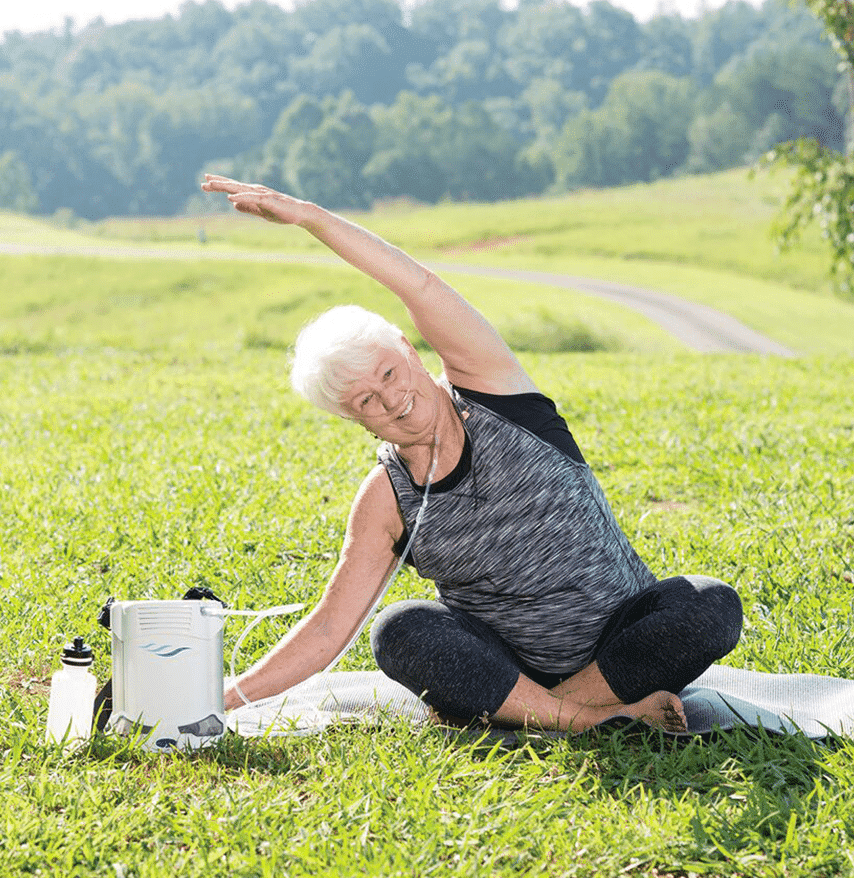
There are levels of severity of COPD that are broken down based on your lungs capacity and their ability to do their job! At a certain point in your diagnosis, there may come a time where you need extra help getting oxygen pumping through your body.
You will go through a series of tests that will display to you doctor whether or not you need supplemental oxygen therapy. As with any prescription drug, you will be prescribed medical oxygen, and within your prescription will be instructions on how much oxygen you need and when.
.jpg)
Supplemental oxygen therapy is designed to help you improve your lifestyle and quality of life. And similarly to prescription medication, too much is too much and too little isn’t enough, so be sure you follow your doctor's instructions when it comes to oxygen therapy.
This also means it's essential to have an oxygen therapy device that can handle your oxygen needs. You can either go with an oxygen tank or a portable oxygen concentrator (POC).

Both devices will give you oxygen, but one device is an older more traditional source of oxygen (tanks) while the other (POCs) is a newer more advanced device that has a number of qualities that make everyday life easier.
To learn more about you oxygen therapy options read this blog: Upgrading From an Oxygen Tank to the Respironics SimplyGo Portable Oxygen Concentrator
So let's get down to it… Once you get that oxygen therapy prescription, your oxygen therapy gives you another chance to treat your disease so it is more manageable and you symptoms are less intrusive.

Oxygen therapy is also the one treatment that has actually been proven to add years to your life, and not only time, but quality time where you can eat right, exercise, and sleep well (if you put in the work).
This is not to say that there will be hard days, COPD and respiratory illness across the board are no joke, and they affect millions of people across the world.
How Oxygen Therapy Can Save your Life
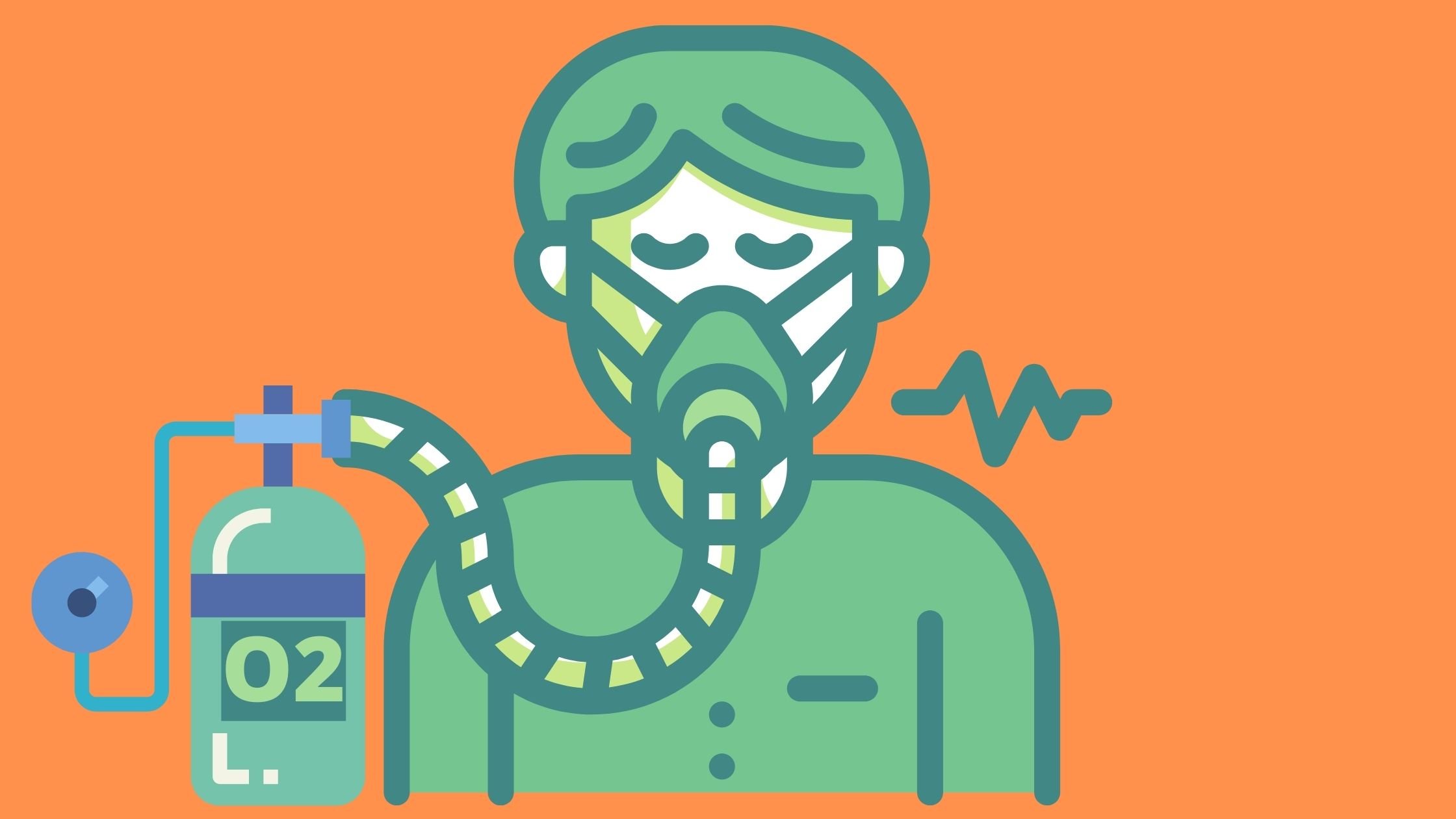
When you get on oxygen you will be sourcing your lungs with extra medical grade pure oxygen so that oxygen can move fluidly throughout your blood and muscles.
With the help of you oxygen therapy you will have an easier time getting to sleep and staying asleep. Exercise will come more easily because you won't fee las tired or short of breath. Oxygen therapy is giving you the tools to live an active and healthy life, so it is not not only extending your life but improving the quality of life you have.
Here are the 7 portable oxygen concentrators, and their most attractive features, that will help you live a long and healthy life.
Inogen One G4
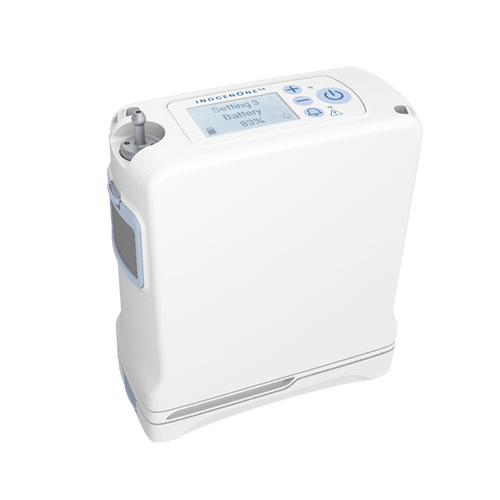
The Inogen One G4 is a pulse flow device, it only weighs 2.8 pounds, that's no more than a basic laptop computer.
Caire Freestyle Comfort
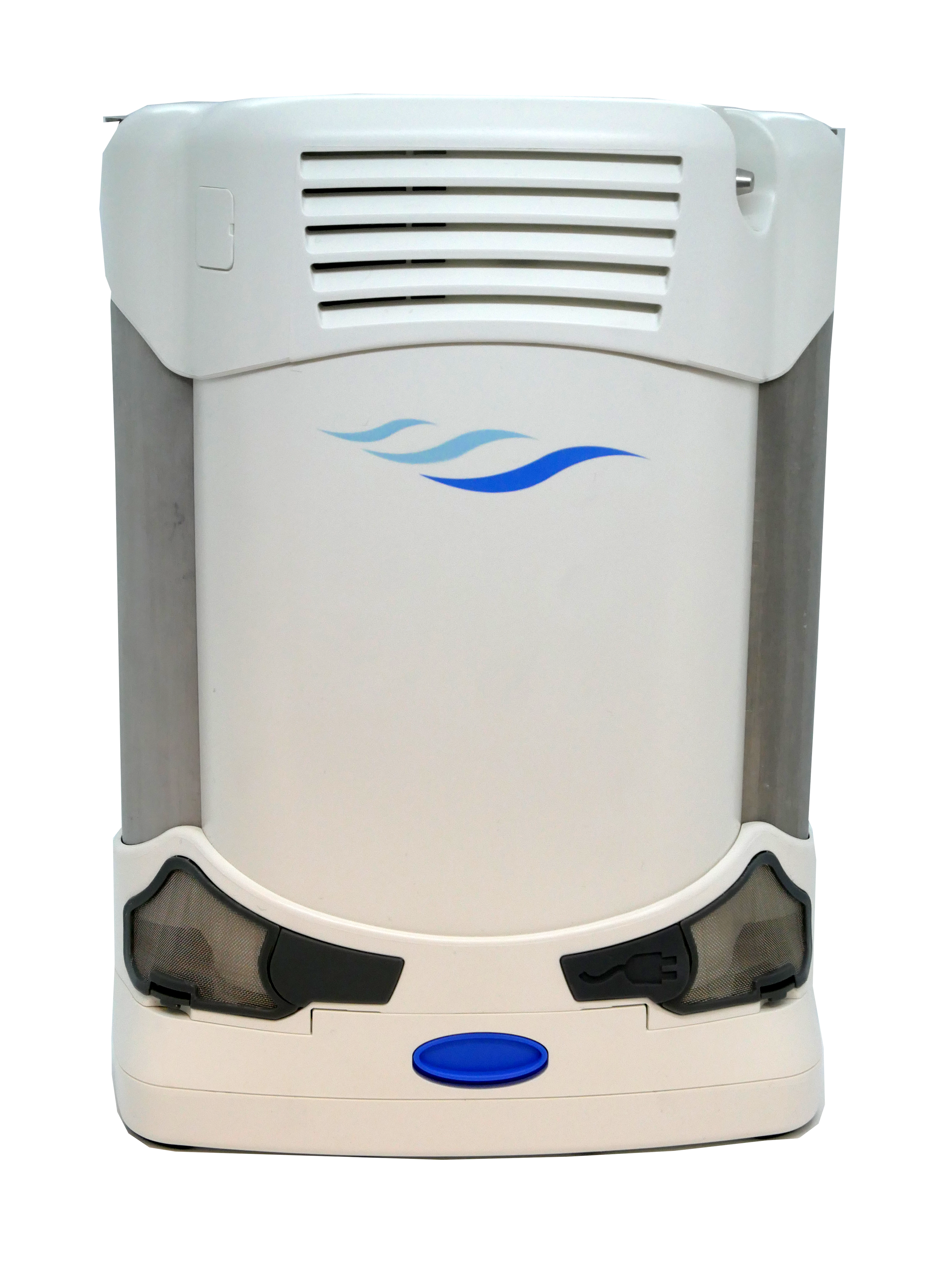
The Caire Freestyle Comfort is also a pulse flow device, it has a long lasting battery life. With the double battery installed it can last for up to 8 hours on a setting of 2 LMP.
Inogen One G5
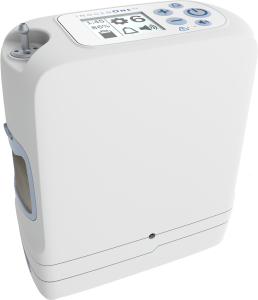
The Inogen One G5 is the most popular pulse flow device on the market because it is so powerful. It can operate on any setting 1-6 LPM without sacrificing battery life.
Respironics SimplyGo
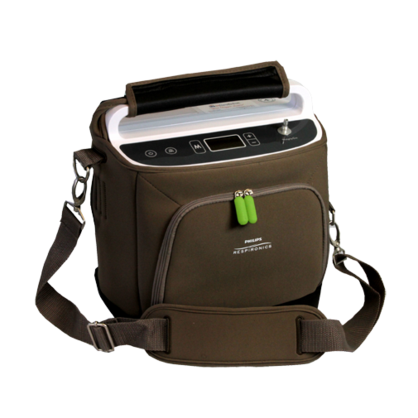
The Respironics SimplyGo is the lightest continuous flow portable oxygen concentrator. It weighs 10 pounds and can give off pulse or continuous oxygen depending on the setting you set it to.
Oxlife Freedom
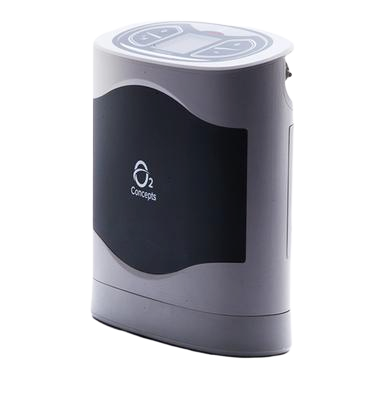
The Oxlife Freedom is a pulse flow device that is the first of its kind. It is equipped with tools to help oxygen patients and their healthcare providers better manage their respiratory conditions! The built in DNA or Dynamic Network Analysis is cutting edge technology that allows your healthcare provider to more closely monitor your oxygen use.
Oxlife Independence
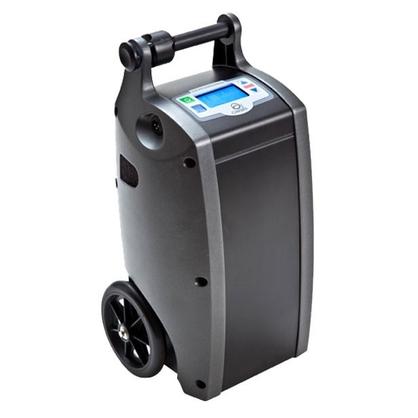
The Oxlife Independence portable oxygen concentrator is a continuous and pulse flow device is also the first of its kind. It is the world’s first “smart” portable oxygen concentrator. It is equipped with the same DNA technology inside the Oxlife Freedom which is powered by the Verizon network. The Oxlife Independence can monitor your usage and corresponding environmental conditions to adapt and proactively support your needs. It tracks vital data like hours used, breathing rate, ambulation, and more!
SeQual Eclipse 5
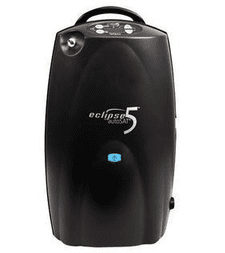
The SeQual Eclipse 5 is both a continuous and pulse flow device. It is known for offering the highest oxygen output on the market, gets good battery life, and it was also designed for the US Military.. It is one of the most popular continuous flow portable oxygen concentrators on the market because of its long-standing track record for being durable and reliable. If it’s good enough for the US Military, that should tell you something.
Staying On Track to Live A Healthy Life on Oxygen
If any of these portable oxygen concentrators are calling your name, simply call 1(800)-946-1201 to speak with an oxygen specialist about their other features and how it can fit into your life!
{{cta('fa8abc2a-1e88-4fa3-82fd-1cb5b9ed43b2','justifycenter')}}
Once you have an oxygen device that you trust you can start adjusting your lifestyle to a more positive and active one that cultivates more energy and happiness. We would like to leave you with some positive suggestions for everyday life that will make the challenges you face dealing with respiratory disease more manageable.
Keep a Journal
Keeping track of your oxygen levels, symptoms, triggers, and health related issues are valuable for you and your doctor. This can give your doctor an inside look at your life at home, and how your symptoms evolve and change so they can advise a course of action and treatment plan that works for you.
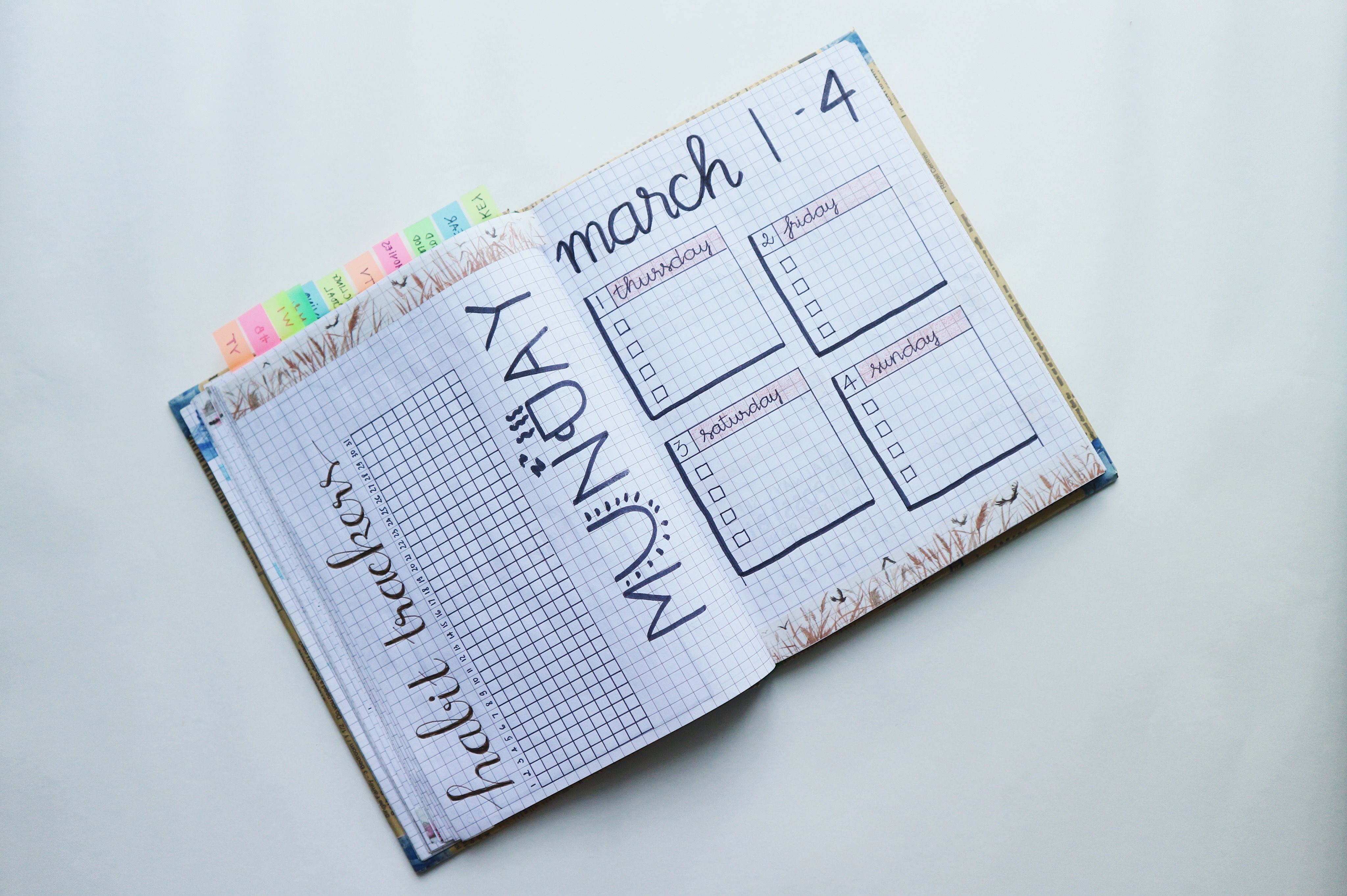
It is also valuable to jot down your emotions, to do lists, write down goals, and stories. Writing ignites a creative part of your brain, that like your muscles need exercise.
Even if you haven't written anything down for years, it is never too late to pick up a pen and paper and write down your struggles, achievements and everything in between.
You will be surprised how helpful it is to make decisions when you create a pros and cons list, or how writing down something that happened to you that day can enhance your memory.
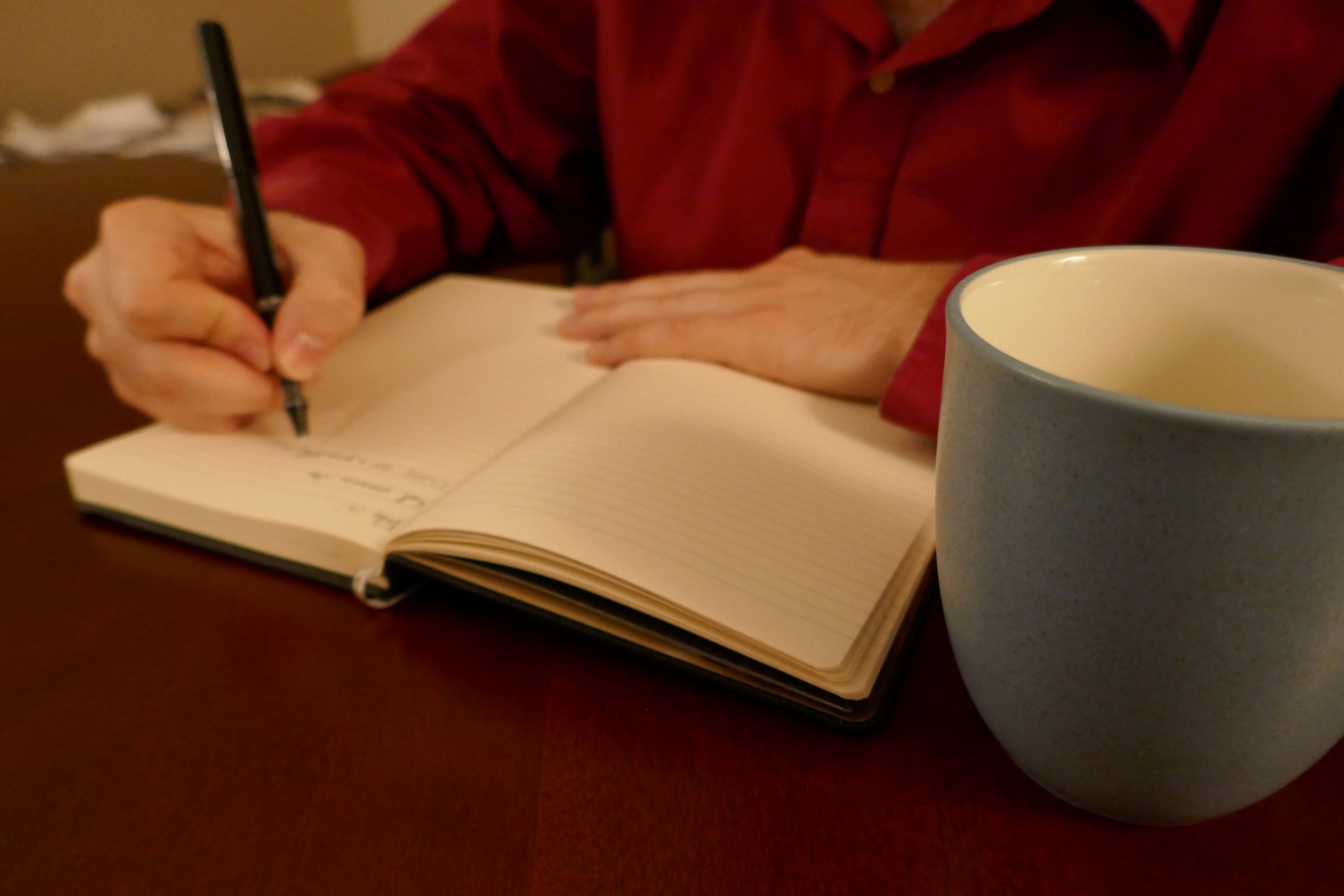
Exercise in the Water
We hear all the time that oxygen patients also require exercise as treatment. But for many, exercise can cause a lot of other issues throughout the body.
People with COPD may have muscle or bone conditions that make exercise painful and high impact workouts can be impossible. Water exercises give you the alternative for a less stress induced workout on the body.
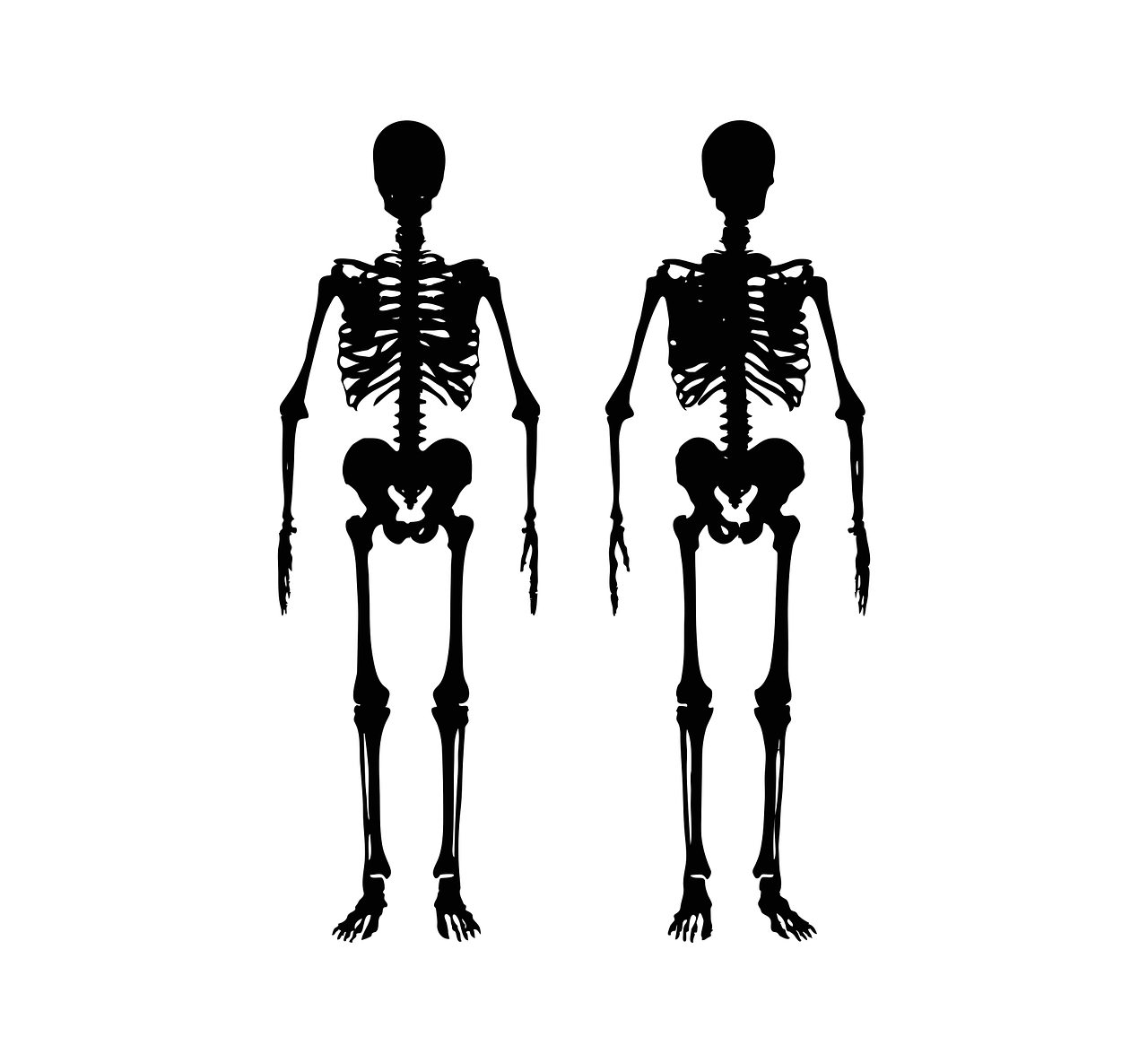
A 2013 study found that water-based exercises might increase a person’s exercise capacity and quality of life. In people with COPD and physical disabilities, water-based exercises were more effective than both land-based exercise and no exercise.
The researchers suggested that these effects might be due to the unique properties of water, which support body weight through buoyancy and provide resistance to increase exercise intensity
Breathing with Purpose to Avoid Excess Anxiety
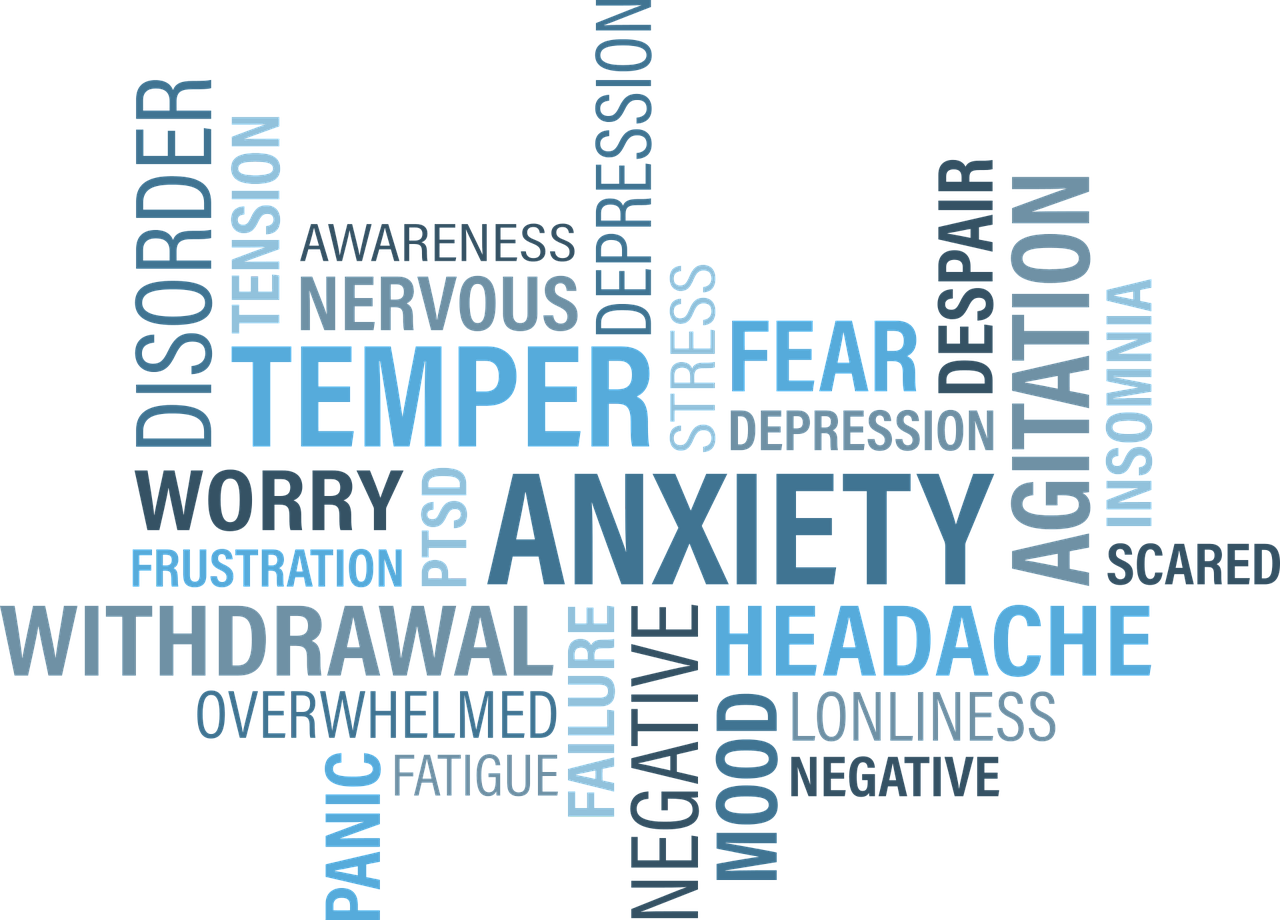
Avoiding stress and anxiety are two big ones when it comes to easing COPD symptoms. Breathing can be directly related to relaxation or lack there of.
Anxiety will come up for the patient and caretakers for everyone with chronic illness. The very real stressors that come with chronic illness include medical emergencies, financial worries, everyday care issues.
So these stressors are unavoidable, and the emotional distress can trigger a physical reaction that may lead to you being hospitalized for exacerbated symptoms, known as a COPD flare up.
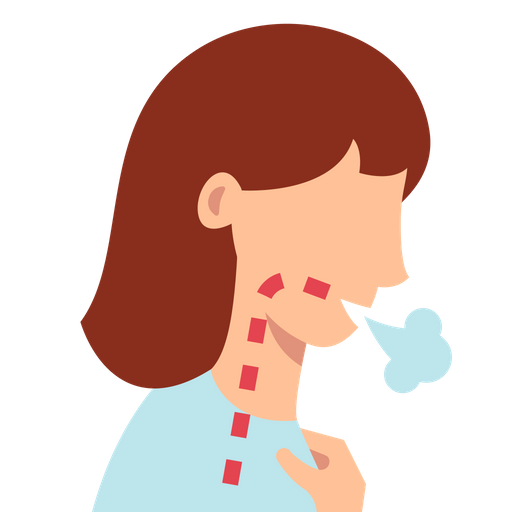
Naturally when humans feel afraid or upset, the heart rate, and blood pressure increase, this causes the breathing to speed up. Anxiety and fast breathing means more shortness of breath. For people with respiratory disease who already suffer from shortness of breath, this can generate even more anxiety, which causes further shortness of breath…It’s a toxic cycle.
So how can you and your caretaker help each other learn to relax in these moments? Try following three basic relaxation techniques from the Crossroads Hospice online resource center:
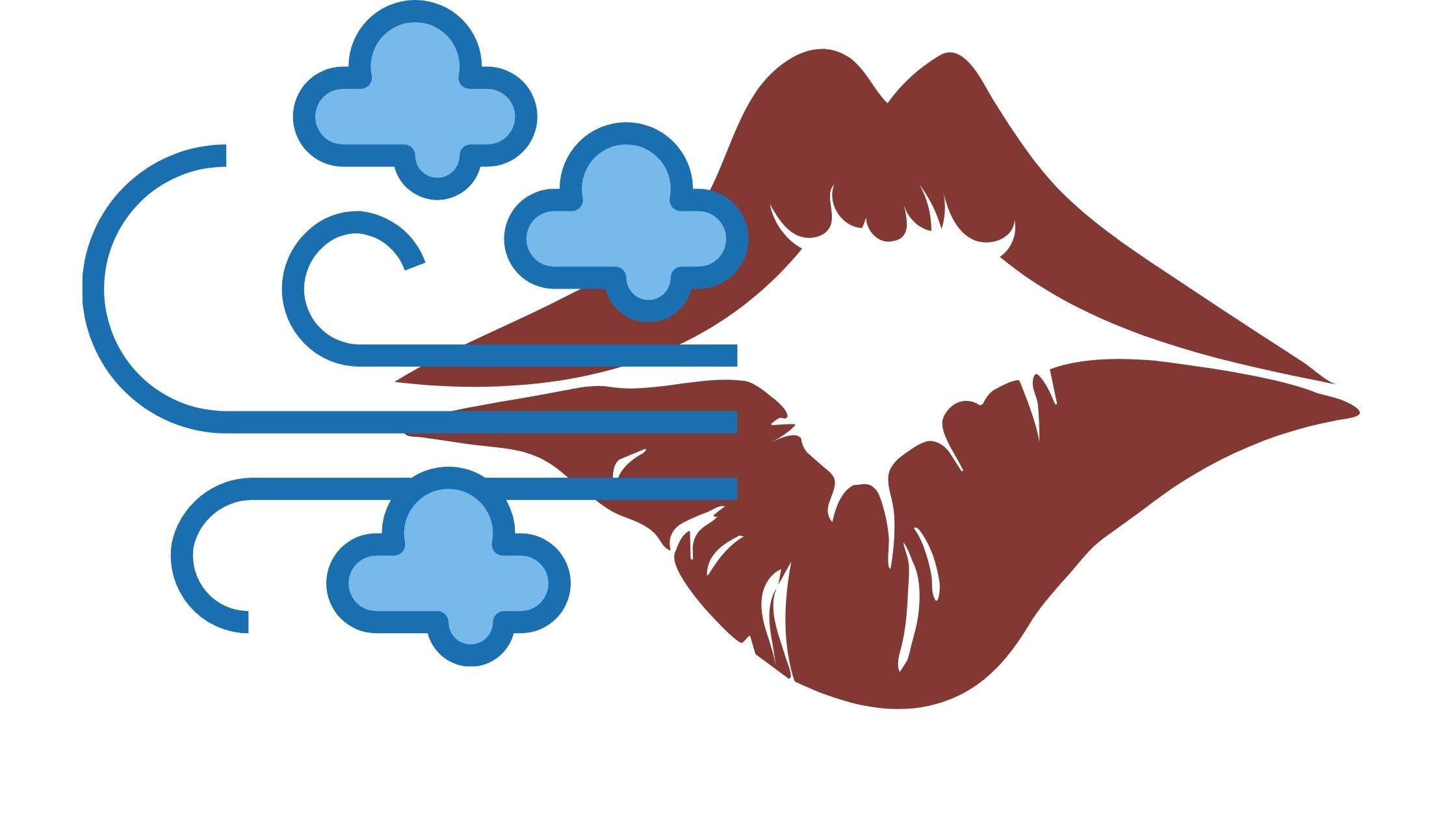
Take 10 minute to do each of the following breathing techniques:
- Deep breathing. Sit comfortably, feet on the floor. Put one hand on your chest, the other just under your ribs. Breathe slowly through your nose, counting to five. Only the hand at your belly should rise. Exhale slowly, counting to five. Repeat.
- Muscle relaxation. Lie down or sit comfortably. Starting with your toes, tense and relax your muscles, moving up your body to calves, thighs, etc. Count to five while tensing and to 30 while relaxing. Notice the difference between tense and relaxed.
- Visualization. In a quiet place, lie down or sit comfortably. Imagine yourself at your favorite place of tranquility (beach, mountains, etc.). Bring in as many elements of the place as you can: what you would be seeing, smelling, hearing, touching.
Managing Fatigue Effectively
![]()
It's common for COPD patients and oxygen users to “run out of gas” even when doing simple things around the house.
You can learn to conserve energy—The energy that keeps you awake and moving around—so you are able to enjoy activities and exercise that you love to do for longer.
Try getting into the rhythm of this simple strategy- Understand that you have a limited amount of energy each day. If you’re mindful of how you use that energy by creating a daily routine, for chorus, everyday necessities, any medical treatment, and exercise and life’s pleasures.
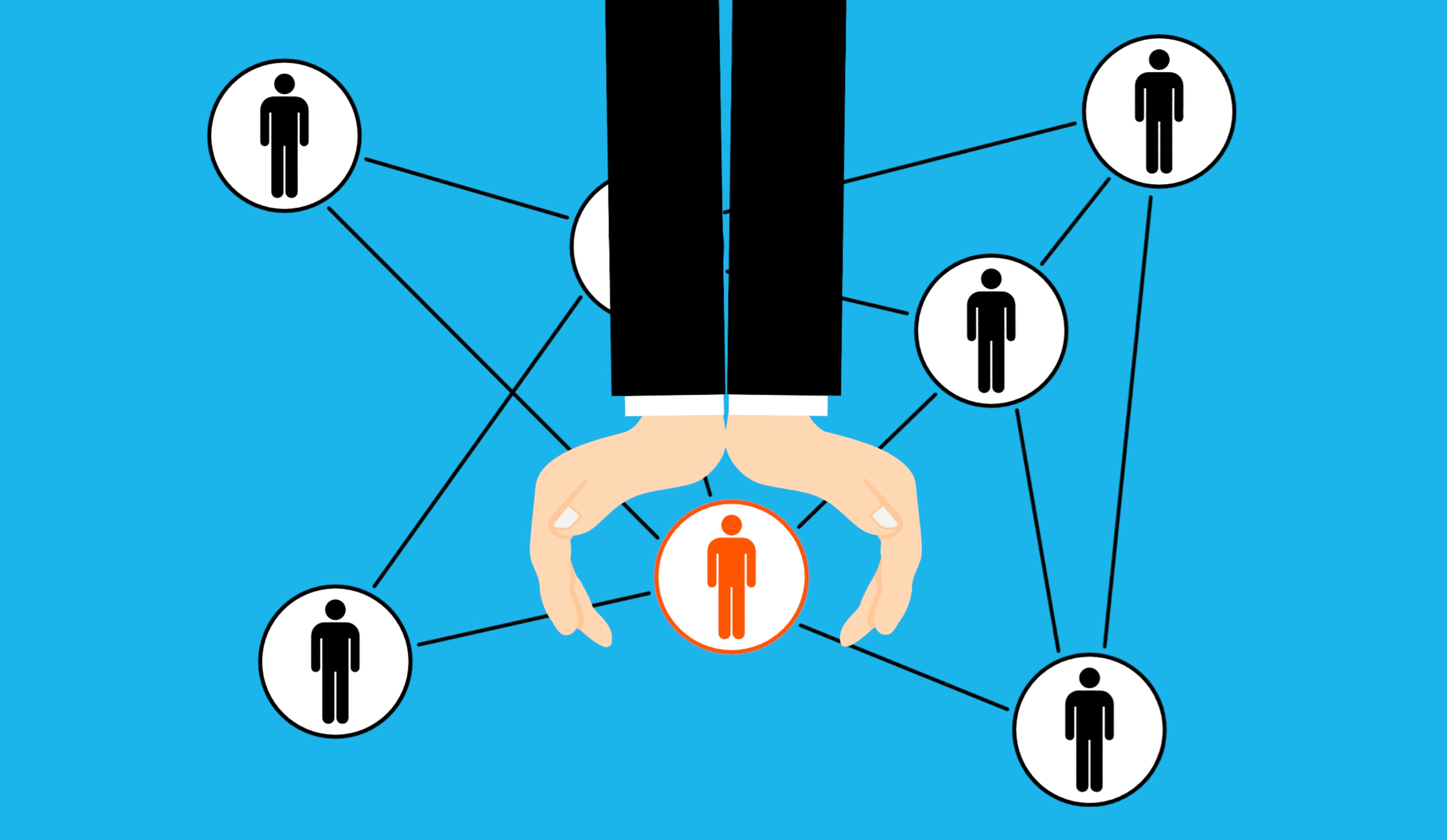
Plan out your days with the pace for each activity. Keep these tactics in mind:
- DON’T rush, allow plenty time for what needs to get done.
- Alternate activity with rest.
- Divide large chores into smaller tasks spread across the day or week.
- Work smarter by minimizing trips up/down stairs, shopping with a list and in as few stores as possible, cook in bulk and freeze the leftovers, after bathing, rest in a terrycloth bathrobe instead of drying with a towel. These little things conserve a lot of energy over time.
- Don’t be afraid to ask for help when you need it. You can order your medications and groceries to be delivered.Throughout the day, look for opportunities to sit down, and minimize time walking, lifting, and bending (use extensions bending and reaching).
- Sit down while cooking, cleaning, bathing, dressing, or grooming face and hair, have a stool or seat handy in multiple rooms of your house.
- Stay organized and lay out supplies at waist height so everything is within easy reach before you start cooking, cleaning, bathing, or dressing.
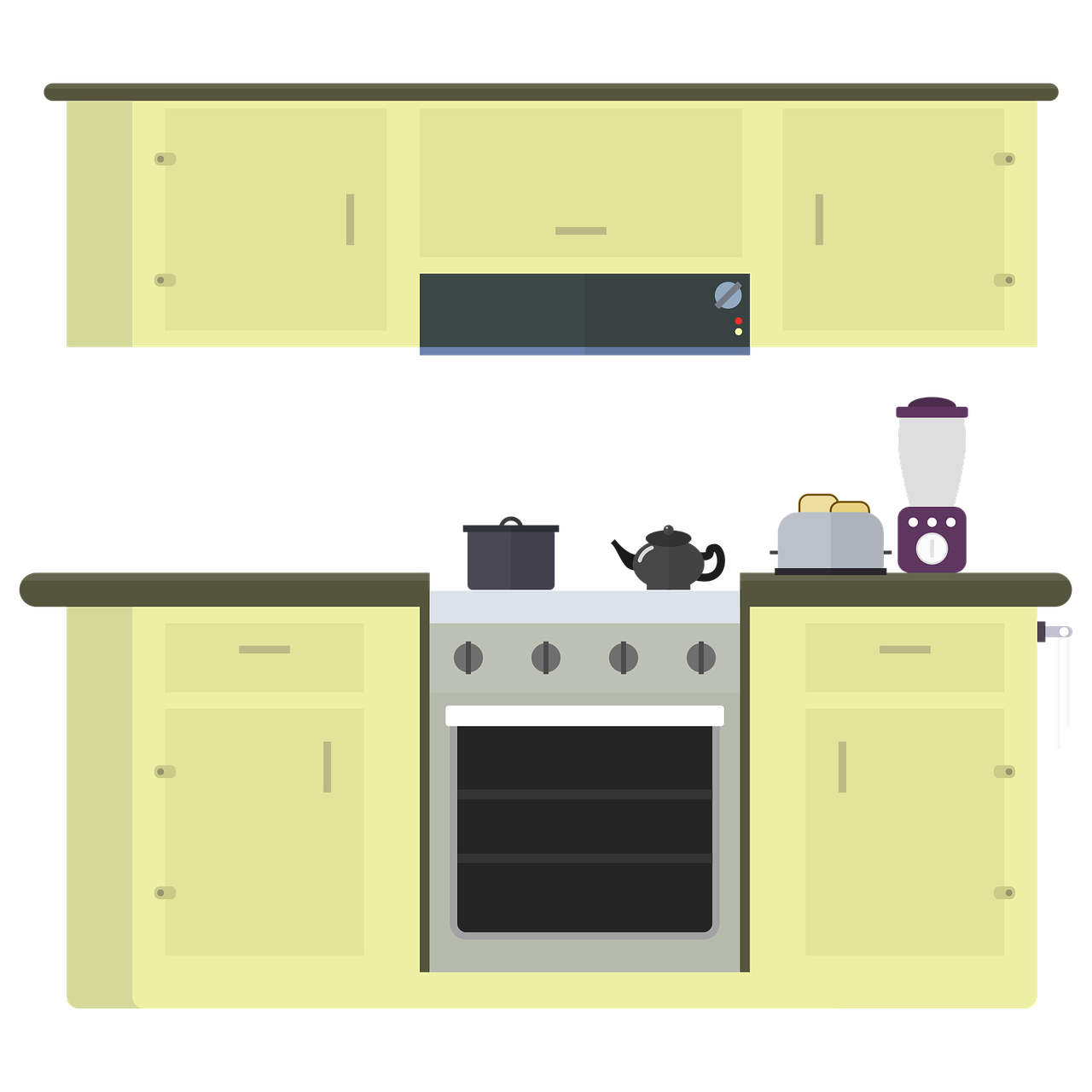
- Use an elevated toilet seat, a grabber for objects, and elongated handles on shoe horns, brushes, and dustpans.
By learning how to operate at a mild pace with lots of helpful tools throughout your house, daily life gets easier and easier, and your tank of energy will get you further and further the more you conserve energy.
Overview
Of course, none of these simple everyday changes listed above will make much of a difference if you are lugging around a heavy oxygen tank, or are stressed and worried about getting your next oxygen delivery.
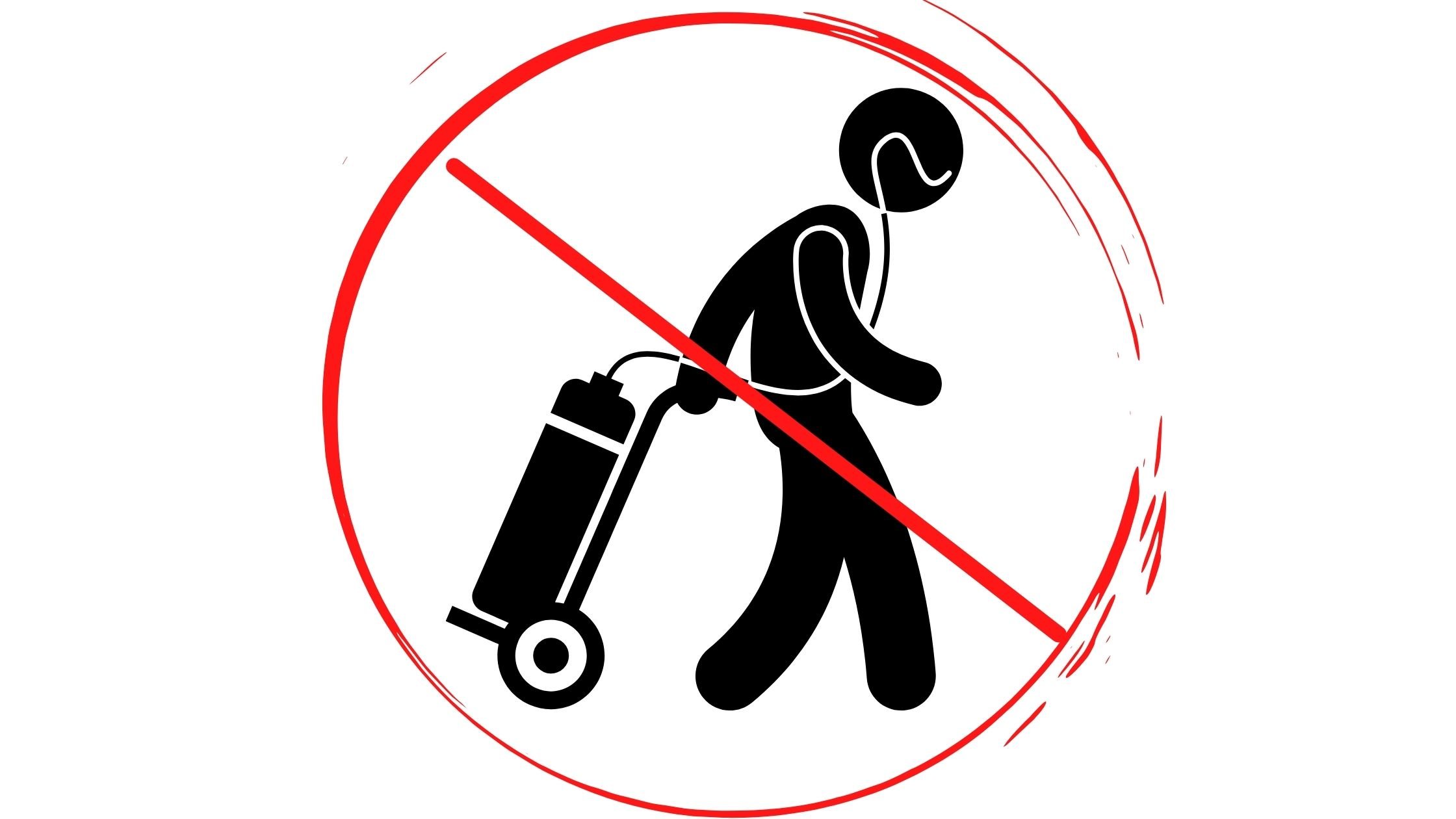
First step to getting your second chance at a healthy and active life after being prescribed oxygen, is getting an oxygen device that can help you through life, rather than holds you back.
Talk to your doctor about your oxygen device options and how your prescription will work day to day, and then call us at LPT Medical at 1(800)-946-1201 so we can help you find a device that fits your needs and lifestyle.


 So we can find the best portable oxygen concentrator for your needs!
So we can find the best portable oxygen concentrator for your needs!













